Sony X85L is a model from 2023 that will be continued in the offering for 2024 by the Japanese manufacturer. Its greatest advantage is the Google TV system. It currently provides the largest access to applications, so we need not worry that one of our favourite applications will be missing. The intuitive interface and voice control feature using Google Assistant make daily use of the television comfortable and modern. As for picture quality, Sony X85L performs well. Thanks to local dimming (albeit with a very average number of zones), black levels look quite decent. Additionally, its fairly high brightness allows for comfortable television viewing during the day, even in well-lit rooms. Furthermore, the television offers a programme recording function with built-in tuners, which is a great convenience for those wanting to control what and when they watch. In terms of motion smoothness, X85L does not disappoint either. The 120 Hz panel and Motionflow system ensure smooth display of dynamic scenes, satisfying both movie enthusiasts and sports fans. The television is also equipped with a range of features for gamers, including VRR, Game Bar and G-Sync support, making it an attractive choice for gaming enthusiasts. Of course, the television is not without its faults. The lack of HGiG support and high input lag in Dolby Vision mode can be disappointing for more demanding gamers. Additionally, the compromise between font readability and image smoothness when connected to a PC may not appeal to everyone. Nevertheless, Sony X85L is a decent piece of equipment that is particularly worth attention if it can be purchased on promotion.
- Matching (Score)
- Our verdict
- TV appearance
- Where to buy
- Contrast and black detail
- HDR effect quality
- Factory color reproduction
- Color reproduction after calibration
- Smoothness of tonal transitions
- Image scaling and smoothness of tonal transitions
- Blur and motion smoothness
- Console compatibility and gaming features
- Input lag
- Compatibility with PC
- Viewing angles
- TV efficiency during daytime
- Details about the matrix
- TV features
- Apps
- Playing files from USB
- Sound
Sony X85L vs Samsung QN80F
Direct compare
X85L
QN80F

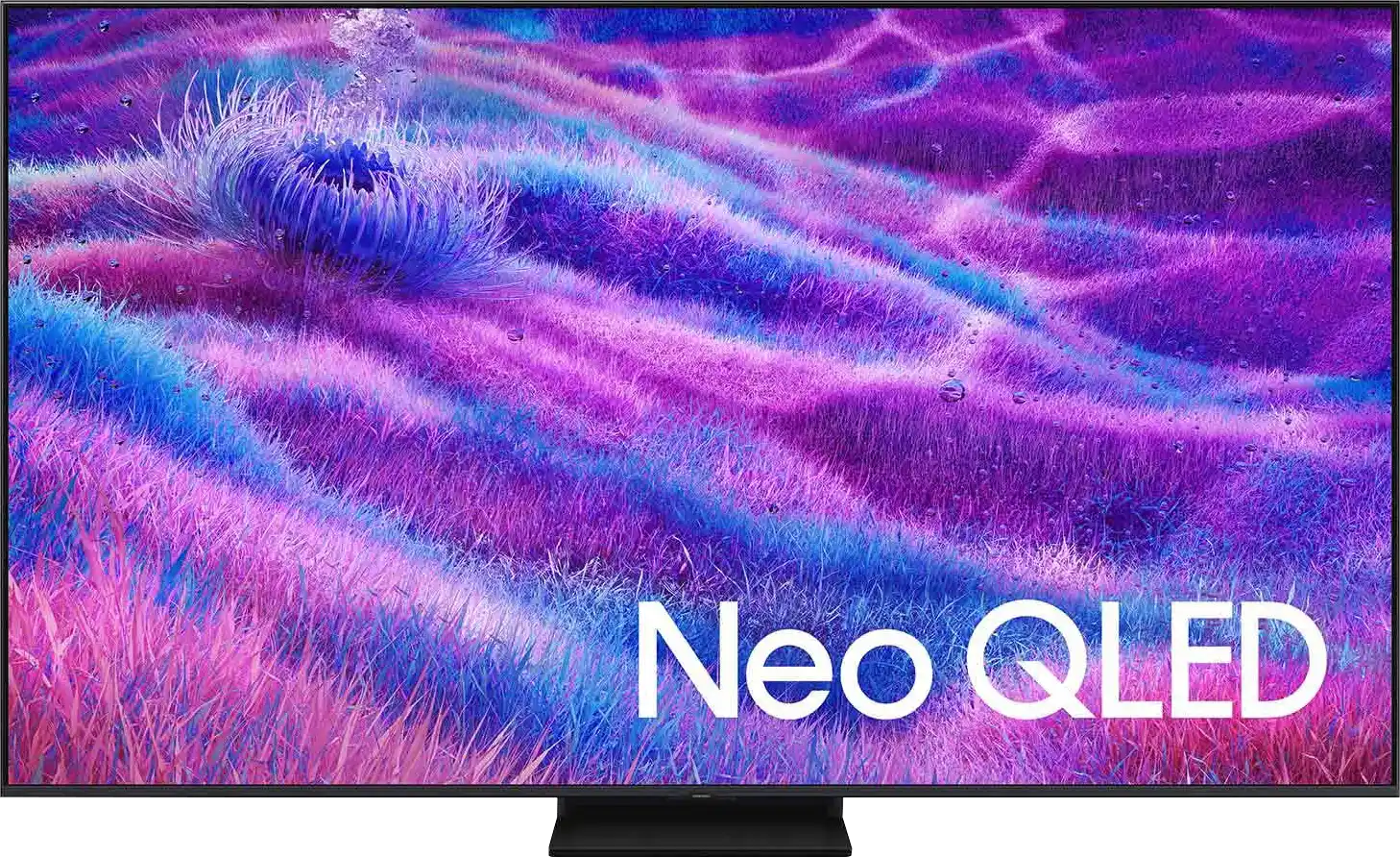
Resolution: 3840x2160
System: Google TV
Model year: 2023
Complete the survey to find out the result

Panel type: LCD VA
Resolution: 3840x2160
System: Tizen
Model year: 2025
Complete the survey to find out the result

Overall rating
6.9
7.3
Movies and series in UHD quality
6.3
6.9
Classic TV, YouTube
6.3
6.8
Sports broadcasts (TV and apps)
6.6
6.7
Gaming on console
7.8
8.5
TV as a computer monitor
5.6
8.8
Watching in bright light
6.5
6.6
Utility functions
7.8
7.5
Apps
9.6
8.7
Sound quality
6.9
6.7
Complete the survey to find out what fits your preferences
Advantages
Advanced Google TV System
Good contrast
Good brightness
Features for gamers - VRR, Game Bar and G-Sync
Base with adjustable legs
Impressive blacks and contrast - VA panel combined with MINI-LED backlighting.
Great brightness - up to 1000 nits in HDR
Fast and responsive panel - 144 Hz
Rich support for gamers - 4xHDMI 2.1, VRR, ALLM, GameBar, Game Motion Plus
Very good usability in daylight
Advanced Tizen operating system
Simple operation
PiP function
Disadvantages
No support for HGiG, Dolby Vision with high input lag
Font readability issues on PC at 120 Hz
Only 2 HDMI 2.1 ports - with one serving as eARC
No support for DTS format – a limitation when connecting a home cinema
No recording function to USB
Relatively few dimming zones
Issues with the HGiG function (for gamers) – the update removed this option*
Our verdict
The QN80F is the first "eighty" from Samsung to enter the series of televisions with Mini LED backlighting. And it does this very well. Although the number of dimming zones isn't particularly impressive, the quality of black levels is solid, and combined with high brightness, it allows for a very decent picture in HDR content. Additionally, there's a 144Hz panel that ensures excellent motion fluidity, and the set of gaming features – VRR, ALLM, Game Motion Plus – makes the QN80F a model practically designed for those gaming on consoles or PC. The television operates quickly and responsively, and the Tizen system runs like lightning – whether you're searching for apps or switching sources. Is there anything to criticise? Of course, as always – there are shortcomings in the system (like USB recording), there's no DTS support, and Mini LED isn't without its limitations. But the QN80F is a fantastic television for everyday use – versatile, refined, and... with great pricing potential. Because looking at the history of this series, we can expect that this "eighty" will mix things up significantly once it hits the first sensible promotions. At that point, it could be virtually unmatched in its price range – especially if Samsung resolves the minor teething issues.
TV appearance




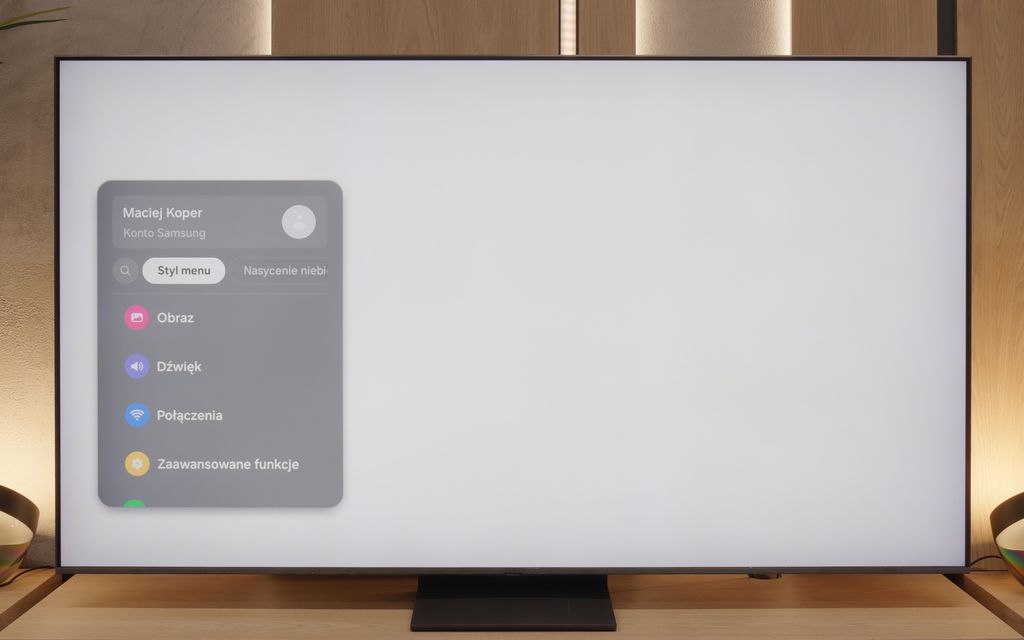
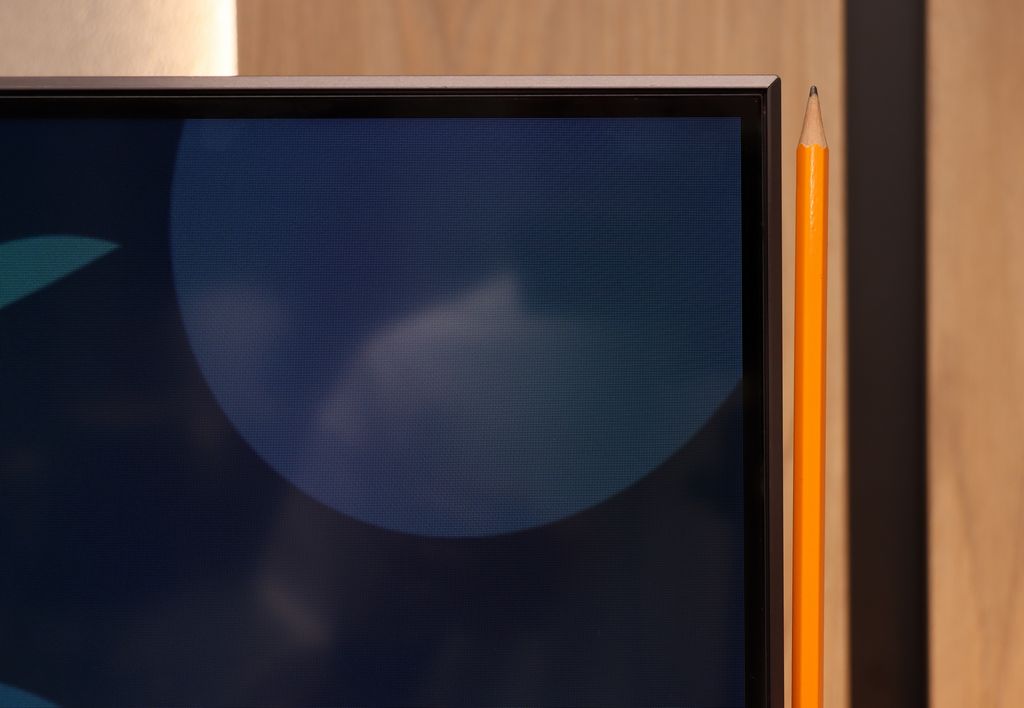
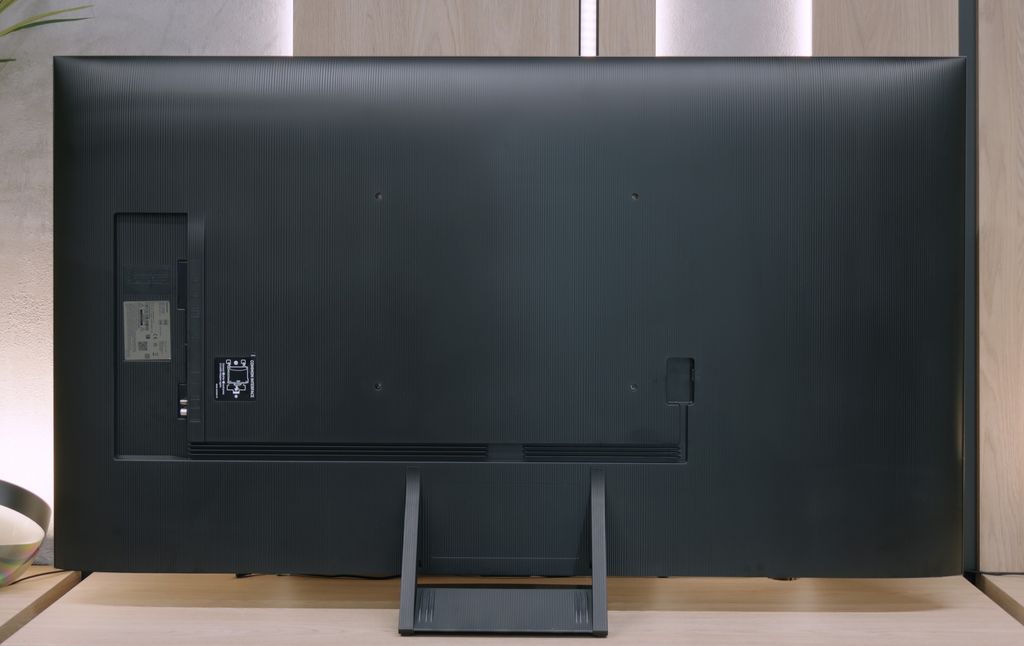

Contrast and black detail
6.7/10
6.8/10
Local dimming function: Yes, number of zones: 24 (4 x 6)
Local dimming function: Yes, number of zones: 88 (8 x 11)
Contrast:

Result
8,700:1

Result
7,800:1

Result
19,200:1

Result
5,750:1

Result
5,150:1

Result
34,100:1

Result
8,200:1

Result
32,500:1

Result
4,550:1

Result
3,800:1
Halo effect and black detail visibility:

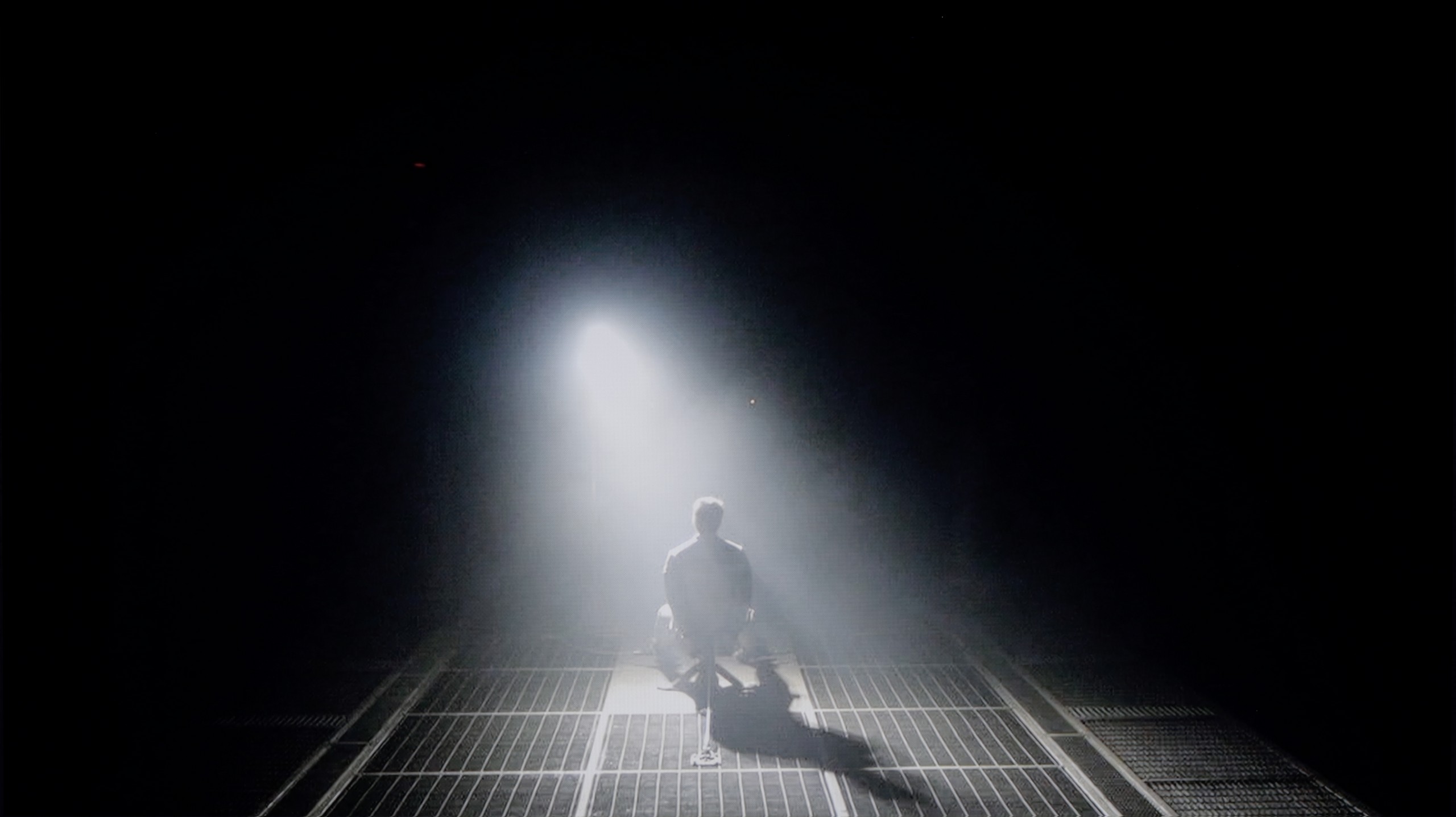
The Sony X85L television is equipped with a VA panel, which in itself offers quite good contrast. Additionally, this model features local dimming technology – in the 55-inch version, it encompasses 24 zones. Although this number is not impressive, it naturally increases with the size of the television. The contrast in the X85L is good, though not the best, especially in comparison to other televisions also equipped with advanced local dimming technology. Results at a level of 8000:1 are satisfactory, but appear average in the context of competition. In some cases, such as the third scene from the film Arrival, the contrast is promising and performs fairly well. This is thanks to the very good dimming algorithm that Sony has employed in its televisions for years. Unfortunately, due to the limited number of local dimming zones, the television struggles with noticeable blooming, which can be observed, for example, in scenes with the helicopter from the film Sicario 2.
QN80F is a representative of the Neo QLED series, meaning it is a television with Mini LED backlighting. Unlike its cheaper cousin, the QN70F model, the diodes here are placed directly behind the panel (rather than at the edges), which gives it a solid advantage right from the start when it comes to contrast control. In the 65-inch variant we tested, we counted 88 dimming zones – a result that may not be particularly impressive, but as it turned out, sufficient to achieve quite decent results.
In tests based on scenes from films such as Oblivion and The Meg, the QN80F performed well – blacks were deep, and the overall image consistency was visually appealing. However, in more demanding moments (e.g., scenes with a large number of bright details on a dark background), a halo effect appeared. This is where the limitation of the number of zones becomes evident – bright elements could bleed into one another, and some details in the dark areas lost visibility. In one scene featuring a helicopter (The Meg), we even noticed slight brightness flickering, as if the television was trying its best to maintain detail visibility at the expense of black depth.
However, these issues are not exclusive to this model – halo effects or drops in contrast during very complex scenes are challenges faced by most Mini LED televisions, even the more expensive ones. In its class, the QN80F performs positively and offers significantly better contrast than the QN70F model with edge backlighting. For most users, this will be a level more than sufficient – although not perfect.
HDR effect quality
5.5/10
5.8/10
Luminance measurements in HDR:

Result
736 nit

Result
415 nit

Result
535 nit

Result
249 nit

Result
599 nit

Result
799 nit

Result
533 nit

Result
717 nit

Result
245 nit

Result
656 nit
Scene from the movie “Pan” (about 2800 nits)


Scene from the movie “Billy Lynn” (about 1100 nits)

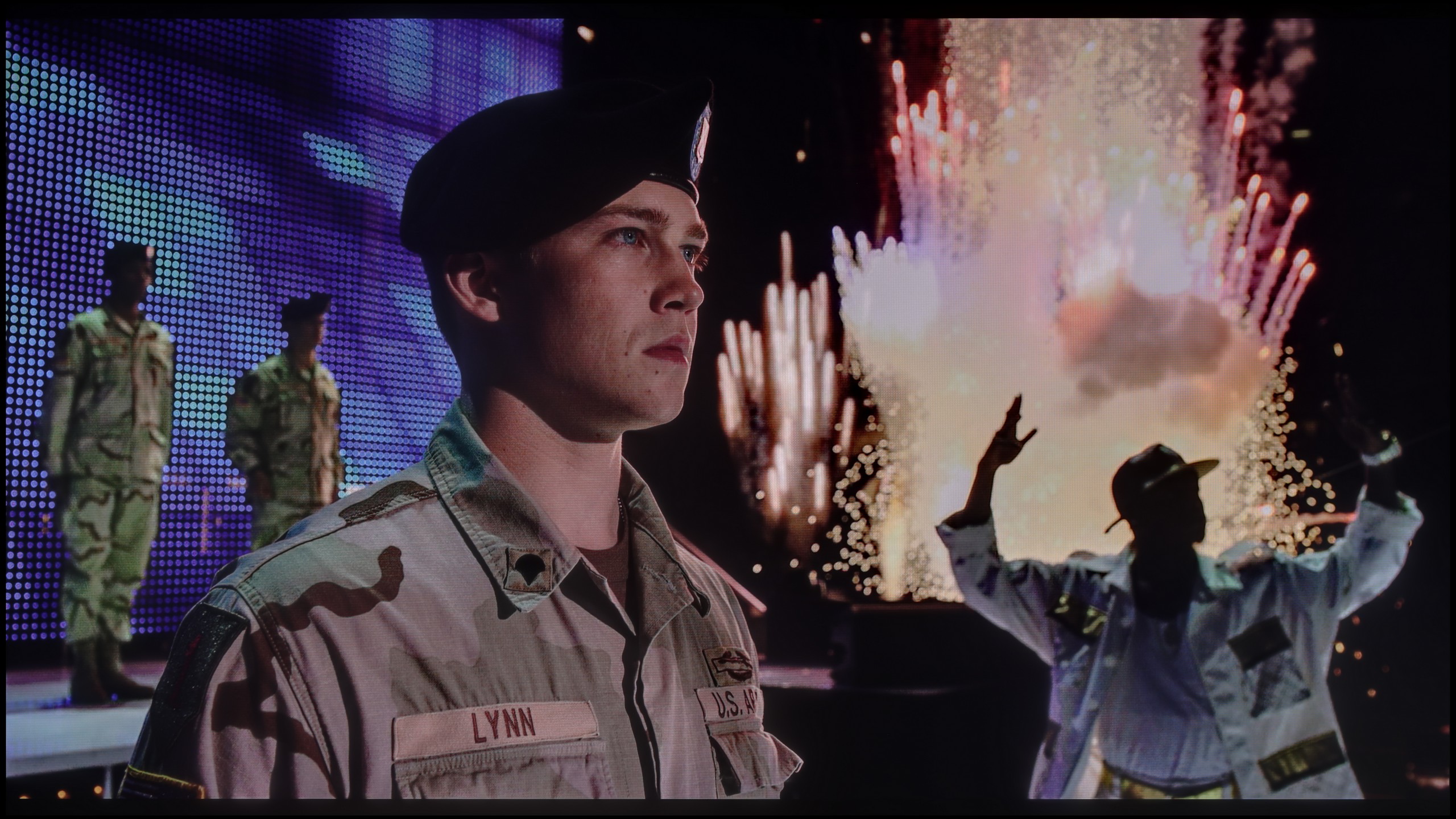
Static HDR10


Dynamic: Dolby Vision
Dynamic: HDR10+


HDR luminance chart:
Samsung QN80F
Luminancja HDR
Luminance of RGB colors
Sony X85L
Luminancja HDR
Luminance of RGB colors
The Sony X85L television offers solid HDR performance with a brightness level of 750 nits, which is sufficient to enjoy vivid effects. In scenes of moderate difficulty, such as the first, third, or fifth test scenes, a brightness of around 600 nits allows one to fully experience the HDR effect. Unfortunately, in more demanding segments, like the scene from the film Sicario 2, the television reveals its limitations. Drops in brightness to 250 nits cause the HDR effect to lose its impressive quality, resembling rather ordinary SDR. Nevertheless, it is worth highlighting the very good coverage of the DCI-P3 colour palette at 95%, which definitely deserves praise and positively impacts the overall image quality.
QN80F is quite a bright screen – in synthetic tests, it achieved nearly 1000 nits, which allows for justified expectations regarding HDR content. And indeed, in many scenes, the television can truly shine. Sequences with a lot of light – like shots from the film Life of Pi or wide, bright surfaces in The Meg – look impressive. Brightness remains around 700 nits, which provides a solid effect, sufficient to feel the true "HDR magic." Unfortunately, not every scene looks that good. In materials with small, bright details on a dark background, such as in Sicario 2, the television has issues – it can significantly dim certain elements, sometimes to the point where they disappear from the image. This is the result of a limited number of dimming zones, which forces the device to make compromises: either maintain inky blacks or sacrifice some detail. QN80F usually chooses the former. As a consolation, there is quite decent coverage of a wide colour gamut – DCI-P3 at 93%. This is not the highest score on the market, but it is more than adequate for most content on streaming platforms.
Factory color reproduction
5.8/10
6/10


Factory Mode
After calibration


Factory Mode
After calibration
The television Sony X85L was tested in IMAX Enhanced mode, which, although associated with world-class cinema, does not guarantee an image that aligns with the director's intention. The main problem is the white balance – there is a noticeable strong dominance of blue colour and significant shortcomings in red. As a result, the picture becomes unnaturally cool and looks artificial. Errors in colour reproduction were confirmed by the Colour Checker test, which showed considerable discrepancies – the colours were "scattered" like shots from a rifle, and only a few samples hit the target values. This clearly demonstrates that the accuracy of colour reproduction leaves much to be desired.
The brightness of the image is one of the positive features of the television. The gamma for HD content is at an acceptable level, although there are minor errors, but generally it is quite good. However, the characteristic of brightness for 4K materials remains a problem, controlled by the EOTF curve. It is evident here that very small, bright elements of the image are too dim, which is the result of the limited number of backlighting zones due to the design of the television.
We test televisions always in the best available factory mode – in the case of the Samsung QN80F, this is the Filmmaker mode, and indeed, it is this mode that offers settings closest to the creators' intentions. However, this does not mean that everything looks perfect. In SDR content, the biggest problem turned out to be an unbalanced white balance – slight deficiencies in green and a noticeable excess of red led to discernible colour errors, one could even say a pinkish tint on the screen. This was well demonstrated in the colour checker test, where the colours 'escaped' beyond their target fields – to the extent that even a sensitive viewer's eye could catch this without the aid of a meter.
In HDR content, the white balance was much better, but another issue arose – brightness management. The EOTF curve resulted in an overly bright image for most of the time, which could affect the perception of contrast and caused the screen to subtly 'flicker' during dynamic light changes. We have already written more about this in the paragraphs on black levels and HDR. Fortunately, Samsung leaves the user with plenty of options. The QN80F offers a rich set of calibration options, including a 20-point white balance – therefore, we decided to check what this television is really capable of after proper calibration.
Color reproduction after calibration
7.5/10
8.3/10

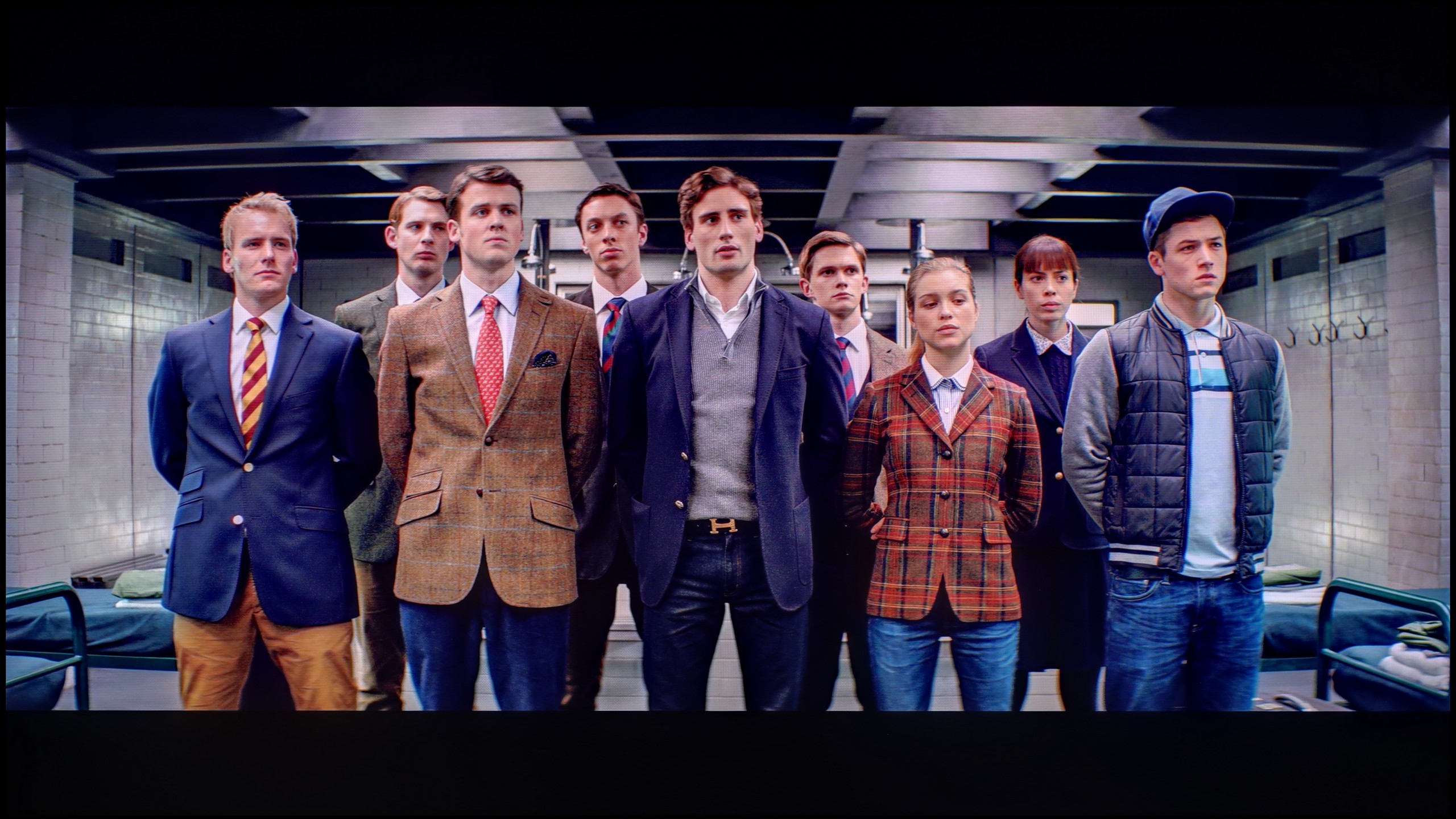


Thanks to the application of calibration tools offered by Sony X85L, the image quality has been significantly improved. After calibration, the white balance for HD content is much more stable, making colours appear more natural and enhancing the authenticity of the image. Although it is not perfect, these changes allow viewers to enjoy a more realistic colour reproduction, eliminating the previous cool tone. The gamma, which was already decent, has been adjusted to an even better version. As a result, tonal transitions and brightness are more consistent, positively affecting the depth and detail of the image.
As for 4K content, despite efforts, the white balance still struggles with a lack of red, which can lead to overly warm colours in some scenes. Synthetic tests showed that the EOTF curve in HDR is quite stable, with a slight enhancement in mid-bright scenes. However, in actual film material, the television can still be too bright with fine, light details, which is a result of the limitations of large local dimming technology.
Nevertheless, calibration has brought significant benefits, particularly in terms of colour accuracy, improving the overall image quality and providing a more natural and cohesive directorial vision.
After conducting a thorough calibration, it was possible to bring most of the image parameters to a really good level. The white balance in both SDR and HDR is nearly perfect – the picture is natural, neutral and devoid of the previously noticeable redness. The colours have gained depth, and the overall visual reception has become more pleasant and cohesive. It was also possible to partially master the brightness management, which in the factory version could be problematic. The EOTF chart shows that the television performs significantly better with brightness after calibration – there is no longer excessive dimming of certain elements. In films, it can still be noticed that the QN80F has a tendency to slightly brighten the smallest, light details – however, this is the effect of the device's design and the limited number of dimming zones. In short: not everything can be overcome, but what could be has been improved. After calibration, the QN80F makes a really good impression; it simply looks more mature and professional.
Smoothness of tonal transitions
7.1/10
9/10

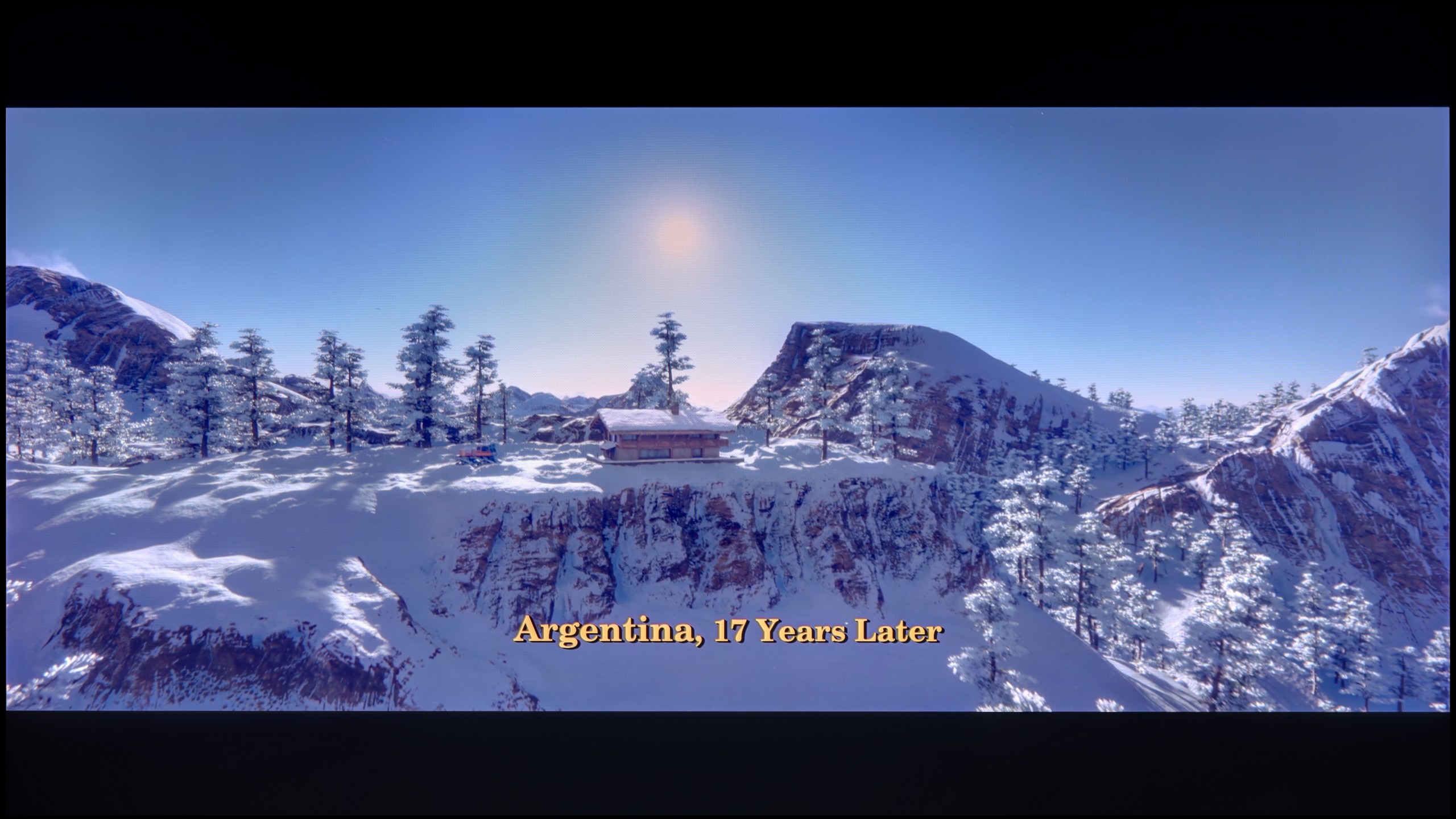



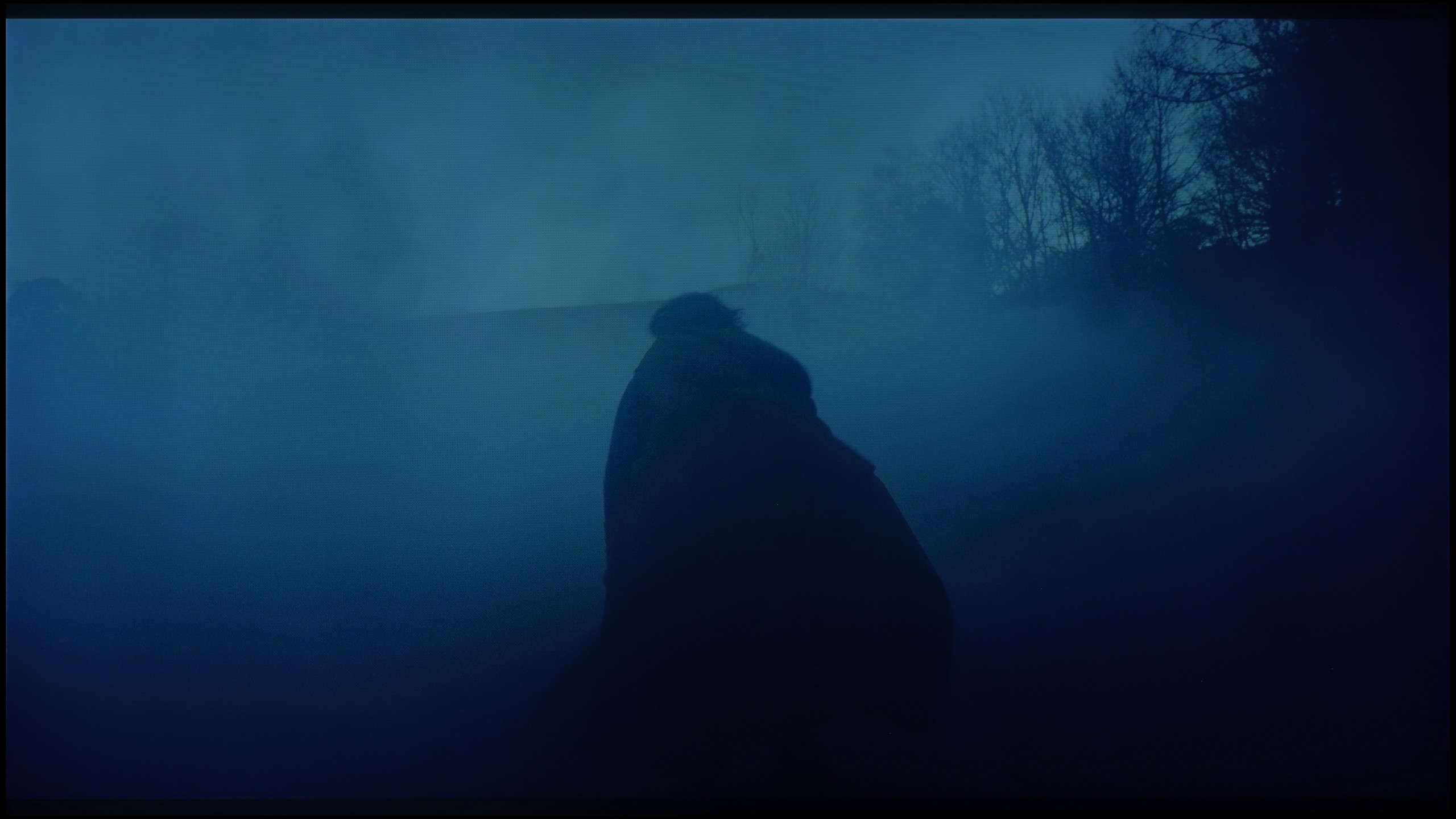

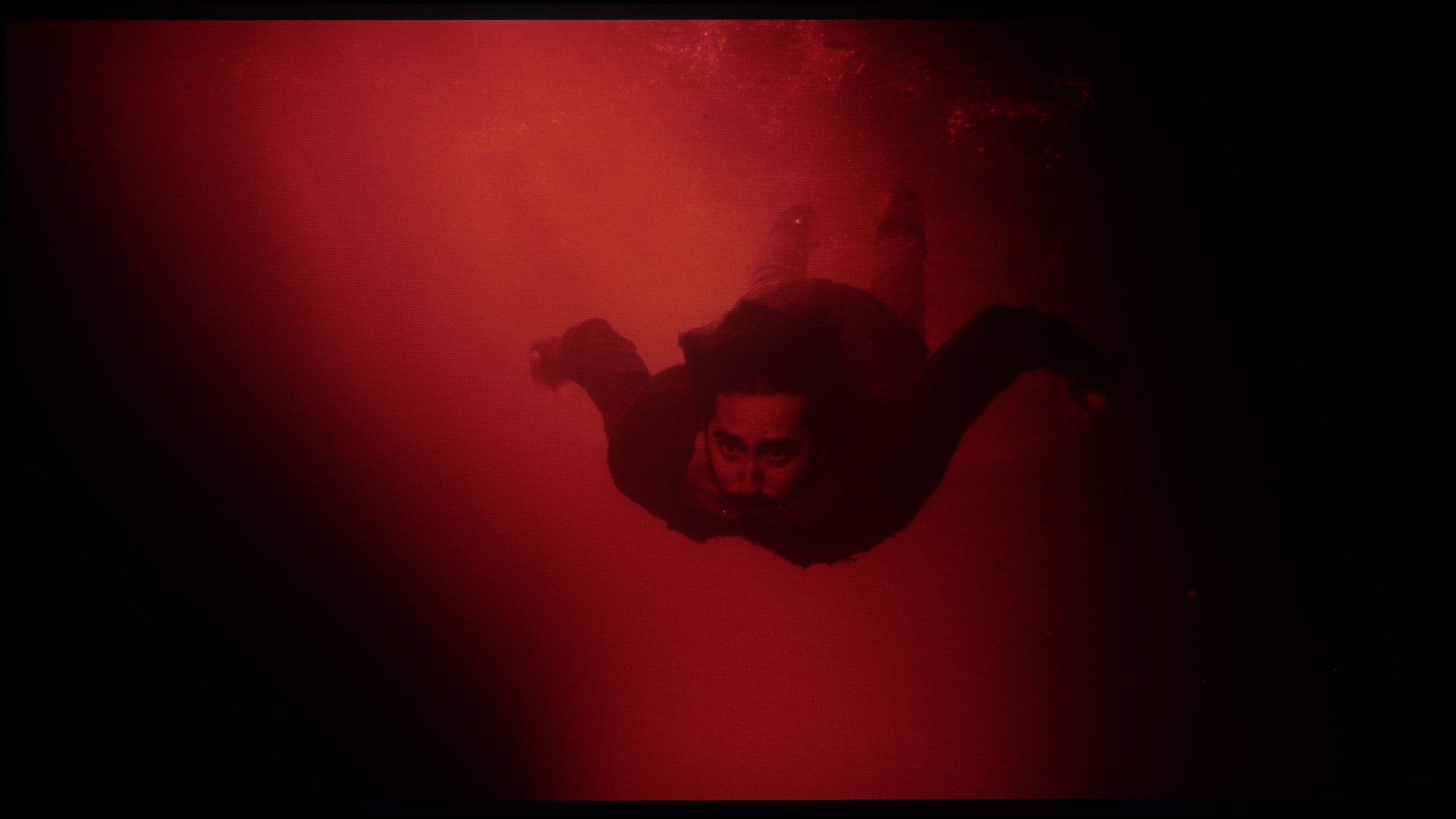




The fluidity of tonal transitions in Sony X85L is at a good level – the gradation of colours is smooth, even in more demanding areas, which makes the perception of scenes positive and natural. The biggest issues arise around shadows, where subtle colour joins may be visible. Despite this, the television performs well enough that most viewers should not notice these minor imperfections.
In this respect, the QN80F truly impresses. The transitions between colours are smooth, nothing is torn, and there are no annoying stripes in the sky or strange blotches in the shadows. Film scenes in darker tones performed particularly well – and this is where most televisions tend to struggle. If one is very determined, they may notice slight banding in the brightest sections, but that is really stretching for an issue. In everyday viewing, no one should have a problem with this. To put it plainly: the tonal transitions are so good that one can forget about them – and simply enjoy the film.
Image scaling and smoothness of tonal transitions
6/10
7/10
Smooth transition function


Image without overscan on the SD signal

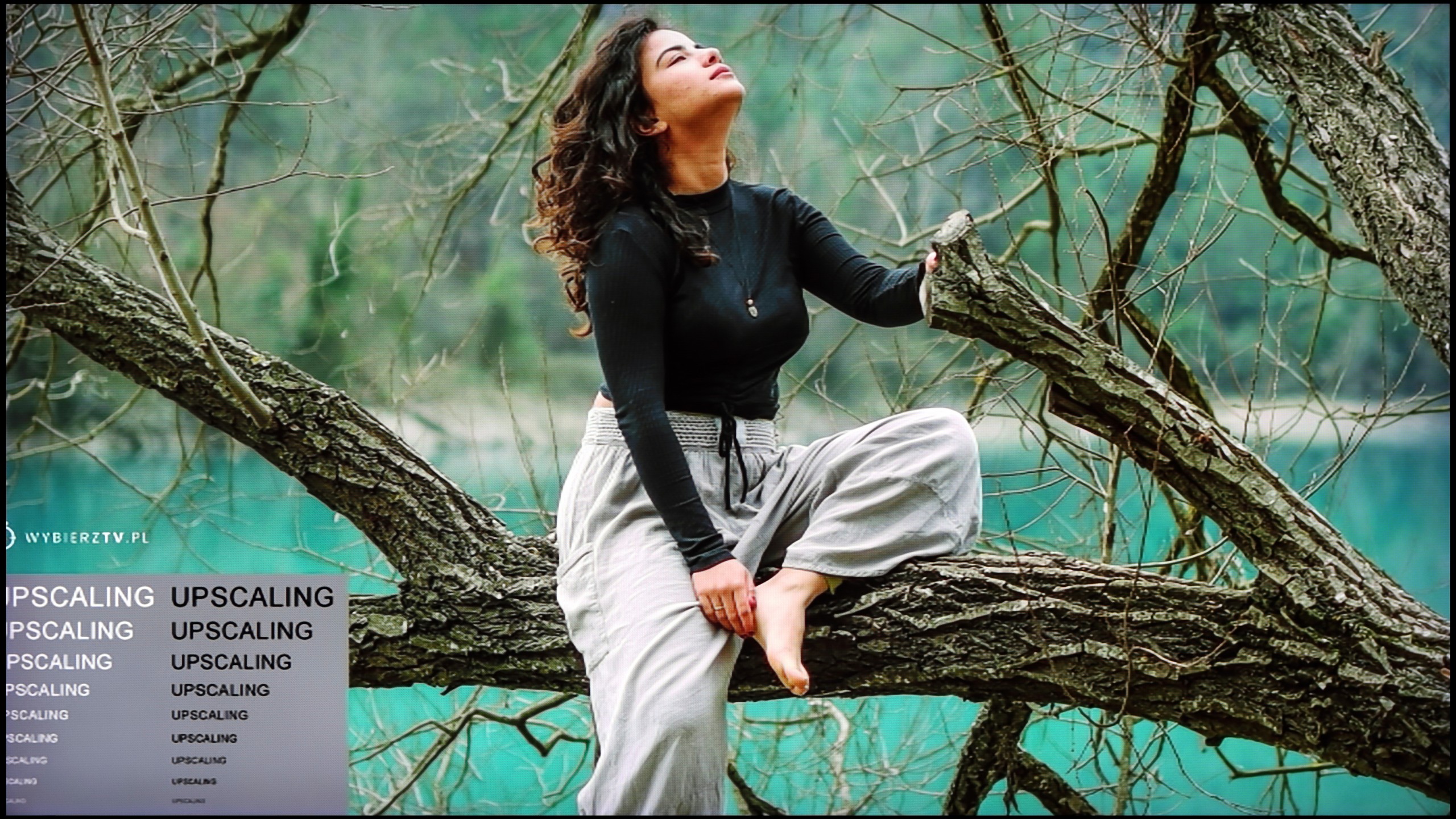
In terms of smoothing tonal transitions, the Sony X85L television does not offer any dedicated enhancement options, which is a certain drawback. On the other hand, the image scaling performs quite well – the television adds a bit of artificial sharpness, which may make details such as tree branches more pronounced, although sometimes with noticeable jagged edges. This type of effect may appeal to some viewers who prefer a more detailed image.
If, while watching lower quality materials – for example from YouTube – we notice strange colour transitions or unwanted artefacts, it's worth checking the settings and turning on the noise reduction feature. In our opinion, the best setting is at “medium” – it effectively smooths out problematic colour transitions while not blurring the entire image too much. However, one must know this: this option tends to remove film grain. If someone cares about preserving this effect (e.g. in older films), it’s better to simply turn it off – regardless of the level, the grain always disappears.
When it comes to resolution scaling (or so-called upscaling), Samsung – as usual – performs very well in this area. The QN80F may not compete with top models costing tens of thousands, but for its price class, it really does impress. Materials of very low quality (e.g. from SD television or older video files) are noticeably improved and look surprisingly decent. The only noticeable drawback is the typical Samsung issue with overscan – that is, slight cropping of the image edges in very low resolutions, e.g. 576p.
Blur and motion smoothness
8/10
7.5/10

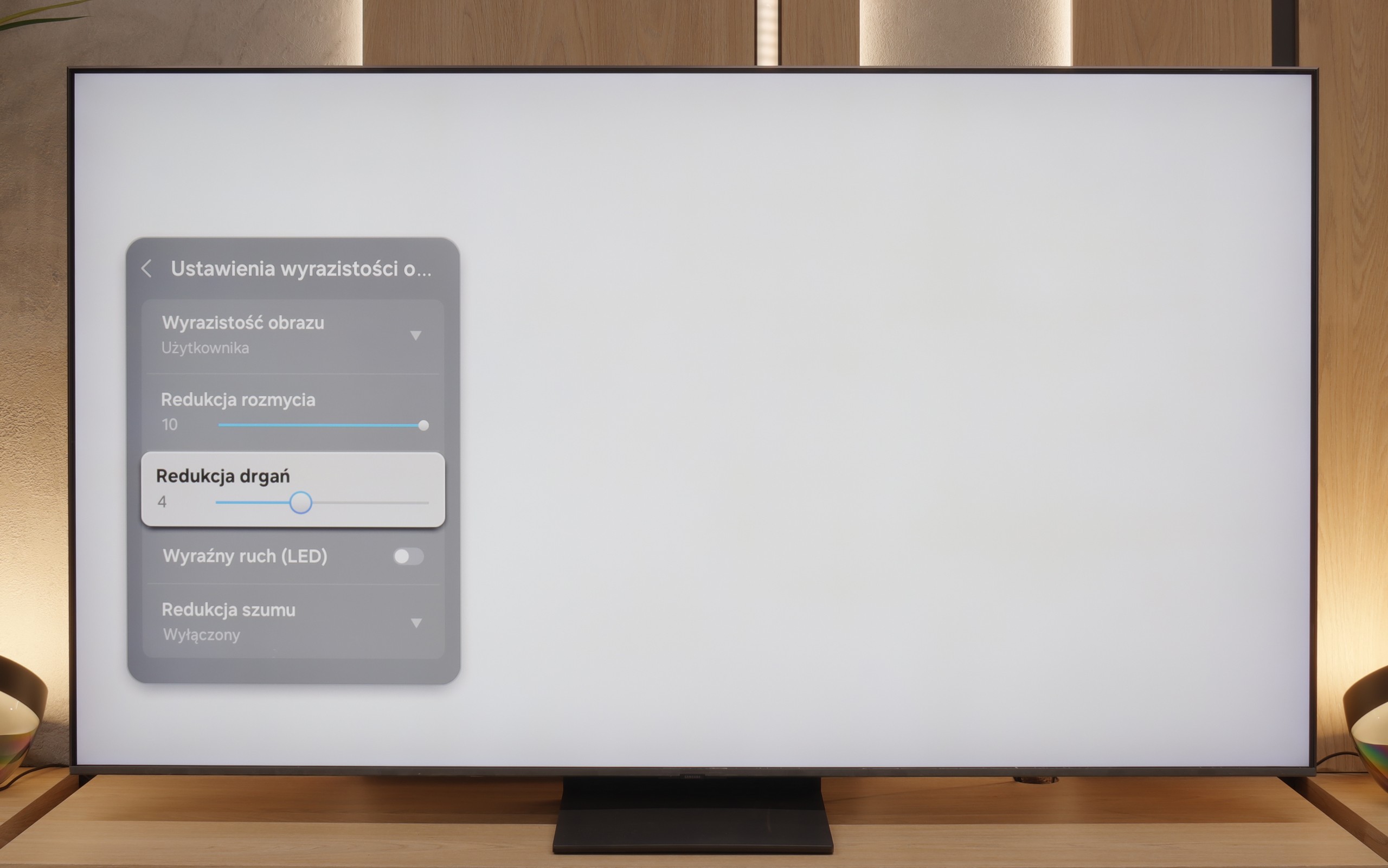
Blur (native resolution, maximum refresh rate):



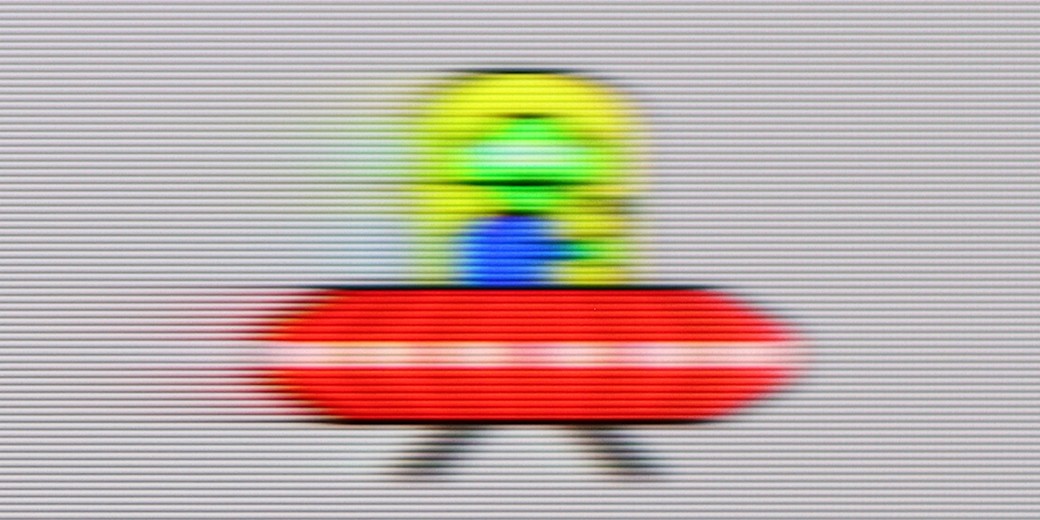
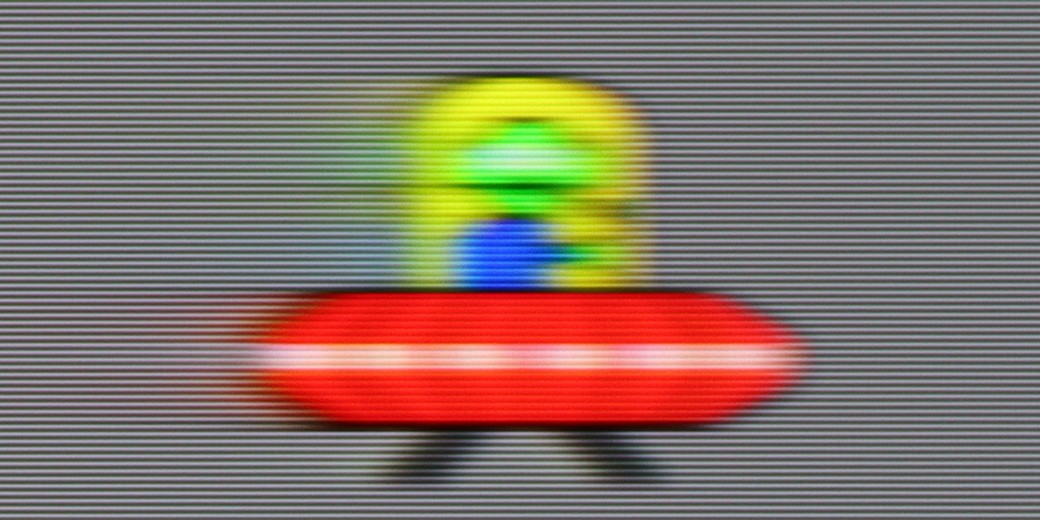

Blur (BFI function enabled):



Image flickers in this mode

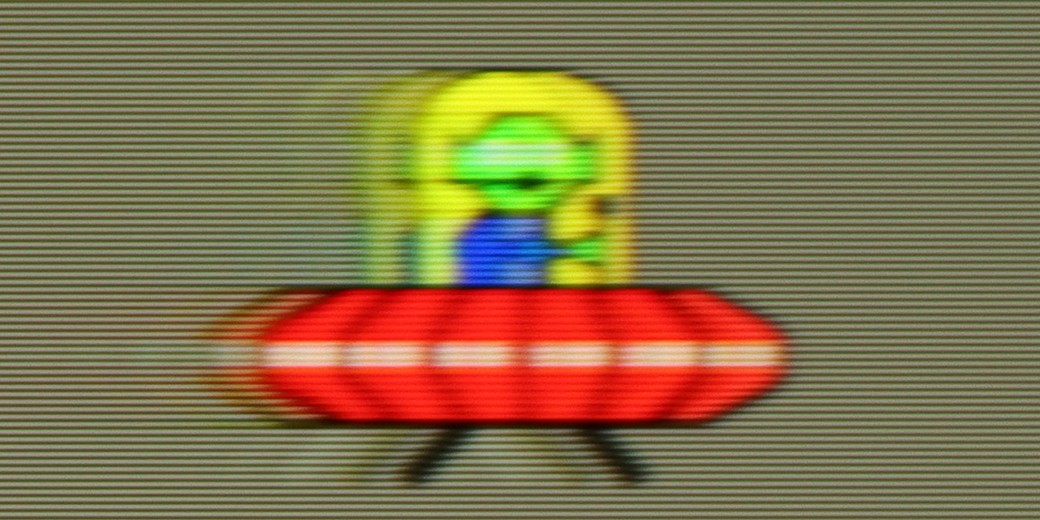
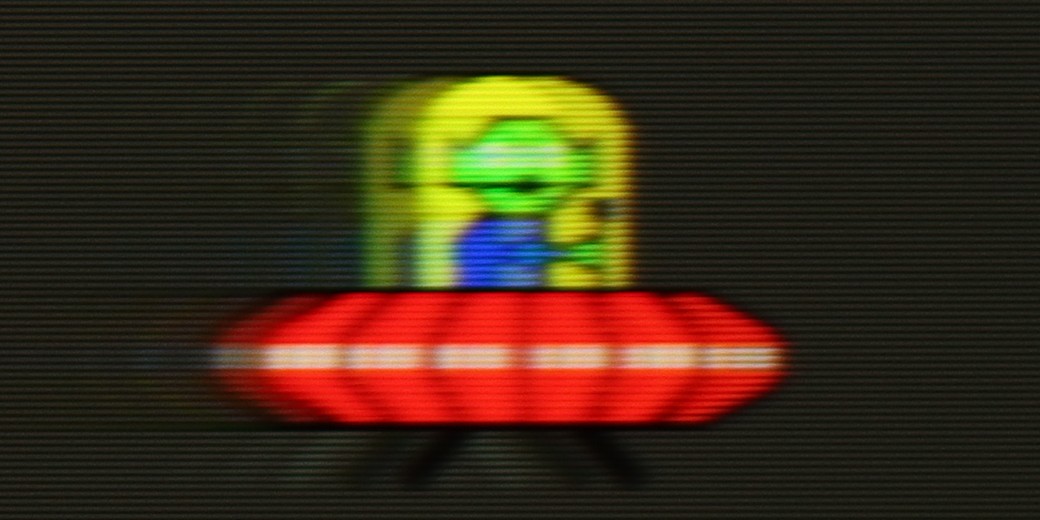
Sony X85L, equipped with a 120 Hz panel, will meet the expectations of a wide range of users – from sports and gaming fans to movie enthusiasts. Movie buffs will certainly appreciate the presence of one of the best motion smoothing systems, known as Motionflow. This system offers adjustment through sliders for smoothness and clarity – smoothness is responsible for motion fluidity, eliminating judder, while clarity improves the sharpness of fast scenes, reducing blur.
QN80F is truly a "fast" television. The applied panel offers a refresh rate of up to 144 Hz, which in practice means that the screen keeps up with the action – whether we're watching a film, playing games, or browsing dynamic content online. The image doesn’t stutter, isn’t excessively smeared, and overall looks simply smooth and pleasing to the eye. Of course, the manufacturer hasn’t forgotten about cinema fans – in the settings, we’ll find an option to adjust motion smoothness, allowing us to tailor the effect to our personal preferences. We can maintain a more "framey" appearance (for those who enjoy the classic cinematic vibe) or ramp up the smoothness to a higher level for a theatrical smoothing effect. Importantly, the choice is ours. Watching films and playing on the QN80F is simply a delight.
Console compatibility and gaming features
7.8/10
8.2/10
- ALLM
- VRR
- VRR range48 - 120Hz48 - 144Hz
- Dolby Vision Game Mode
Yes, high input lag
- Correct implementation of HGIG
- 1080p@120Hz
- 1440p@120Hz
- 4K@120Hz
- Game bar

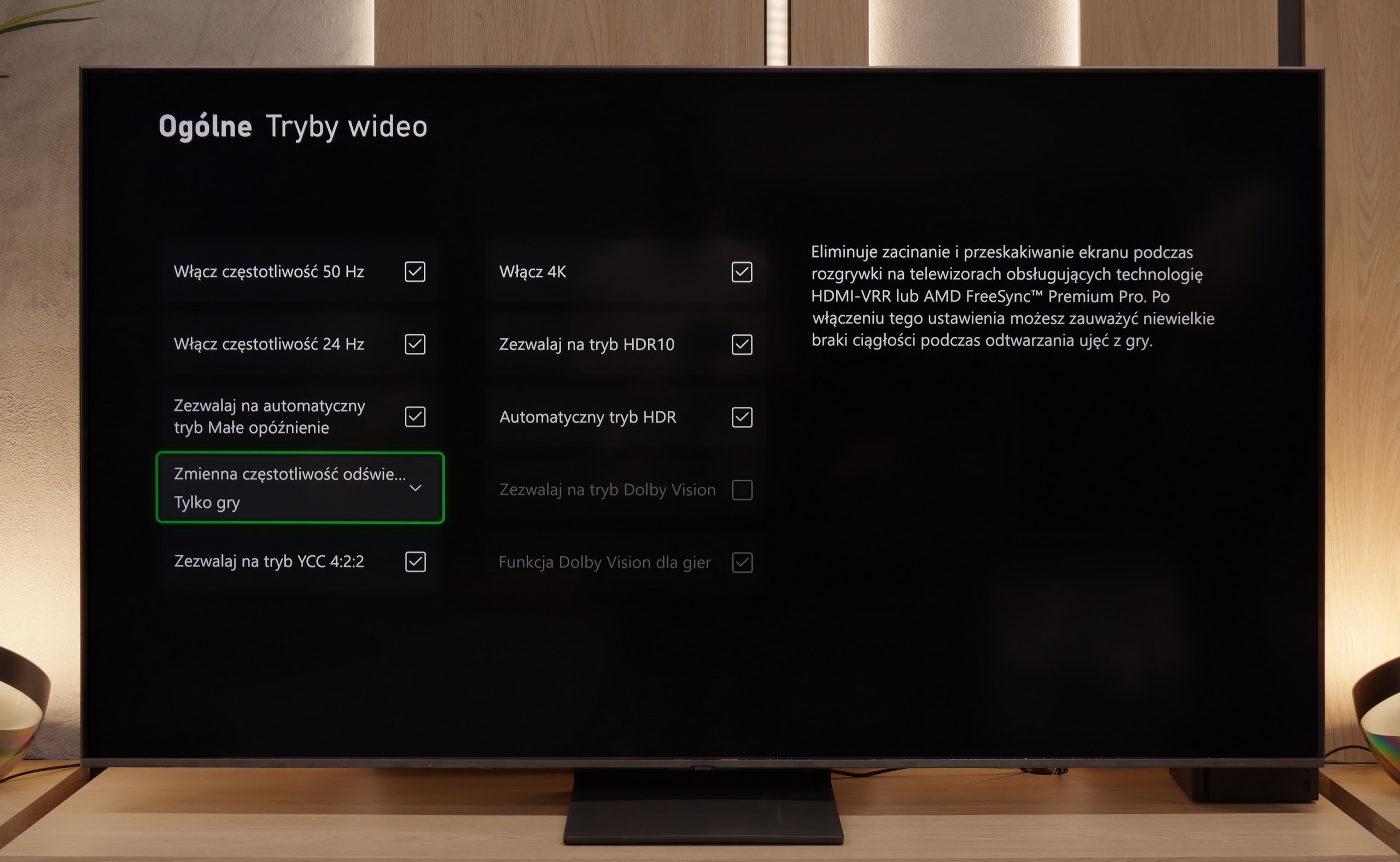



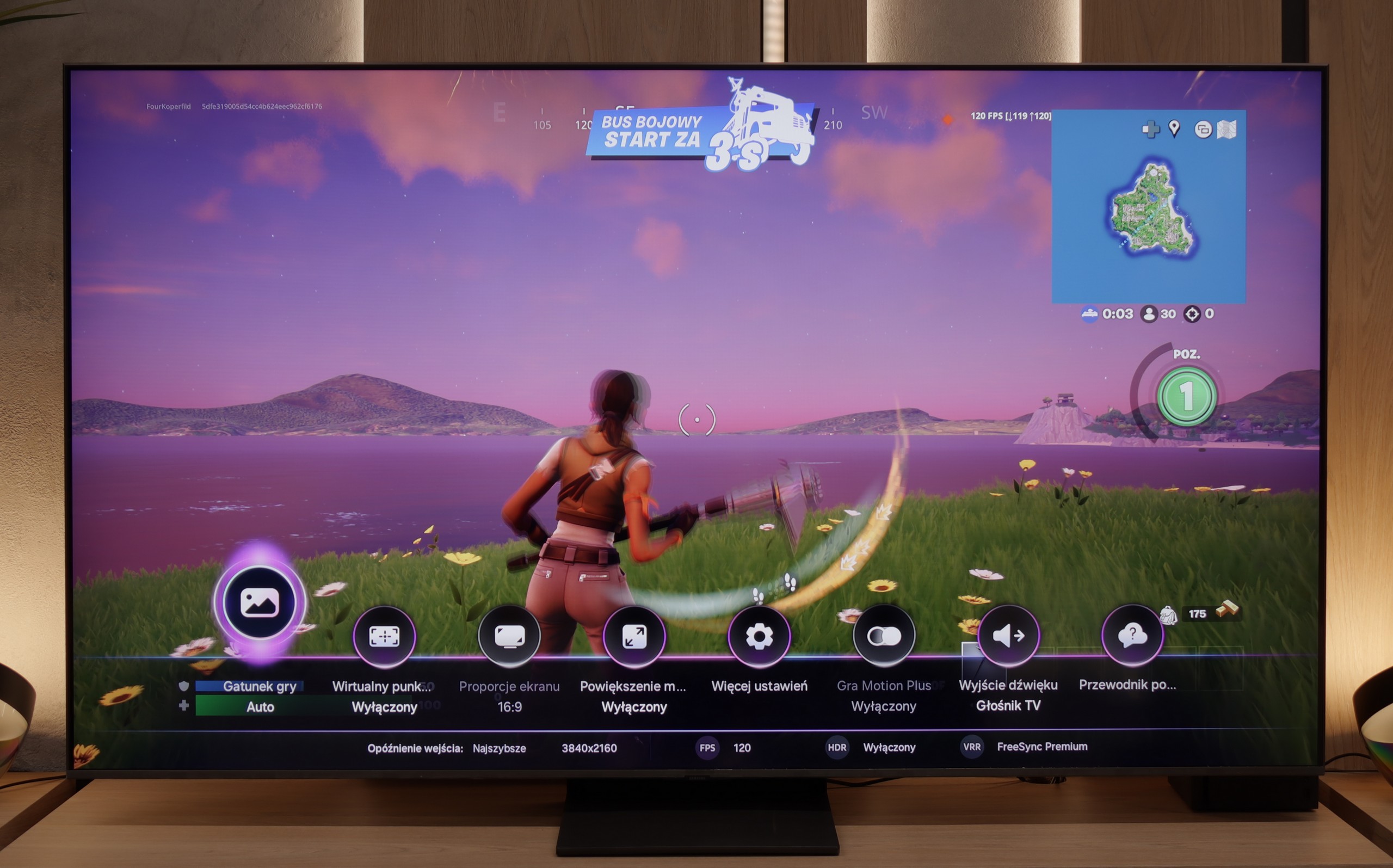

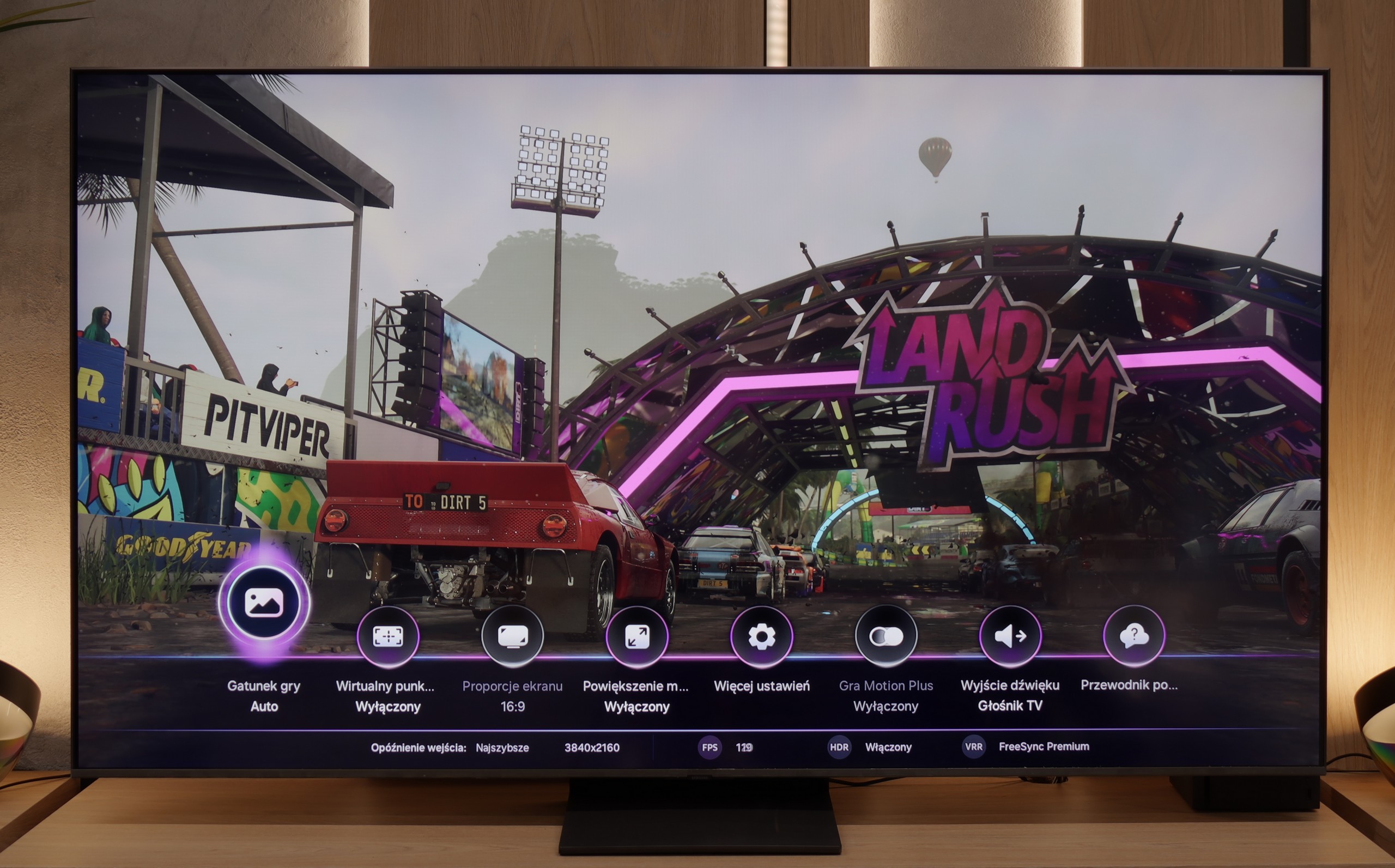
Sony X85L offers a quite solid set of features for gamers, making it an attractive choice for gaming enthusiasts. First and foremost, the television has a 120 Hz panel, which translates to smooth and dynamic image display, ideal for both fast-paced action games and more demanding sports titles. It is equipped with two HDMI 2.1 ports with full bandwidth of 48 Gb/s, allowing for the full utilisation of next-generation consoles. Additionally, Sony X85L supports VRR (Variable Refresh Rate) technology, which helps reduce stuttering and artifacts during gameplay, providing a smooth experience. The television also supports G-Sync, which is particularly beneficial for gamers using NVIDIA graphics cards, allowing for the synchronisation of the screen refresh rate with GPU performance, eliminating screen tearing. It is worth mentioning the Game Bar feature, which facilitates quick access to the most important gaming-related settings, such as VRR, brightness levels, and display modes, which is convenient and useful during gameplay.
However, there are certain limitations. The television does not support HGiG, which may be a downside for some gamers, as HGiG optimises HDR effect rendering in games, providing a more authentic visual experience. Additionally, while the Dolby Vision mode is available, it is not practical for gaming due to the very high input lag.
The Samsung QN80F is a television that delivers on almost every front when it comes to gaming. We have a 144 Hz panel, four full-fledged HDMI 2.1 ports, support for gamers in the form of variable refresh rate (VRR), automatic game mode (ALLM), and even one of the best-designed game bars on the market. The cherry on top is the motion smoother, which – uniquely in the world – works in games without significantly increasing input lag. Sounds like an almost perfect television for gamers? And indeed, it is almost that.
As usual, Samsung does not support Dolby Vision in games, but that no longer surprises anyone. However, it is considerably more surprising that... the HGIG function has disappeared – that is, the system that allows the console (e.g., PlayStation 5 or Xbox Series X) to precisely match HDR tone mapping to the television’s capabilities. In the latest firmware update for the 2025 models, this option has simply vanished. This looks more like a mistake than a deliberate move, but it must be noted fairly that as of the date of writing this review, the HGIG function is simply not available.
And it is precisely because of this one missing feature that the QN80F transforms from an almost perfect gaming television into a “nearly” perfect device. It’s a shame – because everything else suggested that Samsung could once again set the bar very high in this generation.
Input lag
9.1/10
9.8/10
SDR
HDR
Dolby Vision
Generally speaking, the input lag on the Sony X85L is very good, which is crucial for smooth gameplay and quick reactions in games. In standard modes, especially when using HDMI 2.1 and playing at a resolution of 4K at 120 Hz, the input lag is minimal.
Unfortunately, the Dolby Vision mode is an exception to this rule. In this case, the input lag reaches as much as 95 ms. Such a high level of delay makes the Dolby Vision mode virtually unplayable, as the responses to commands are noticeably delayed.
The QN80F does not disappoint when it comes to response time. The input lag for 120 Hz content drops below 10 ms, which can be considered an almost perfect result – it is hard to expect more in this class of TVs. Gaming is smooth, responsive, and without delays that could annoy even the most sensitive players. For 60 Hz materials, the lag is higher, around 19 ms, but this is a completely natural phenomenon and still falls within comfortable limits.
Compatibility with PC
5.6/10
8.8/10

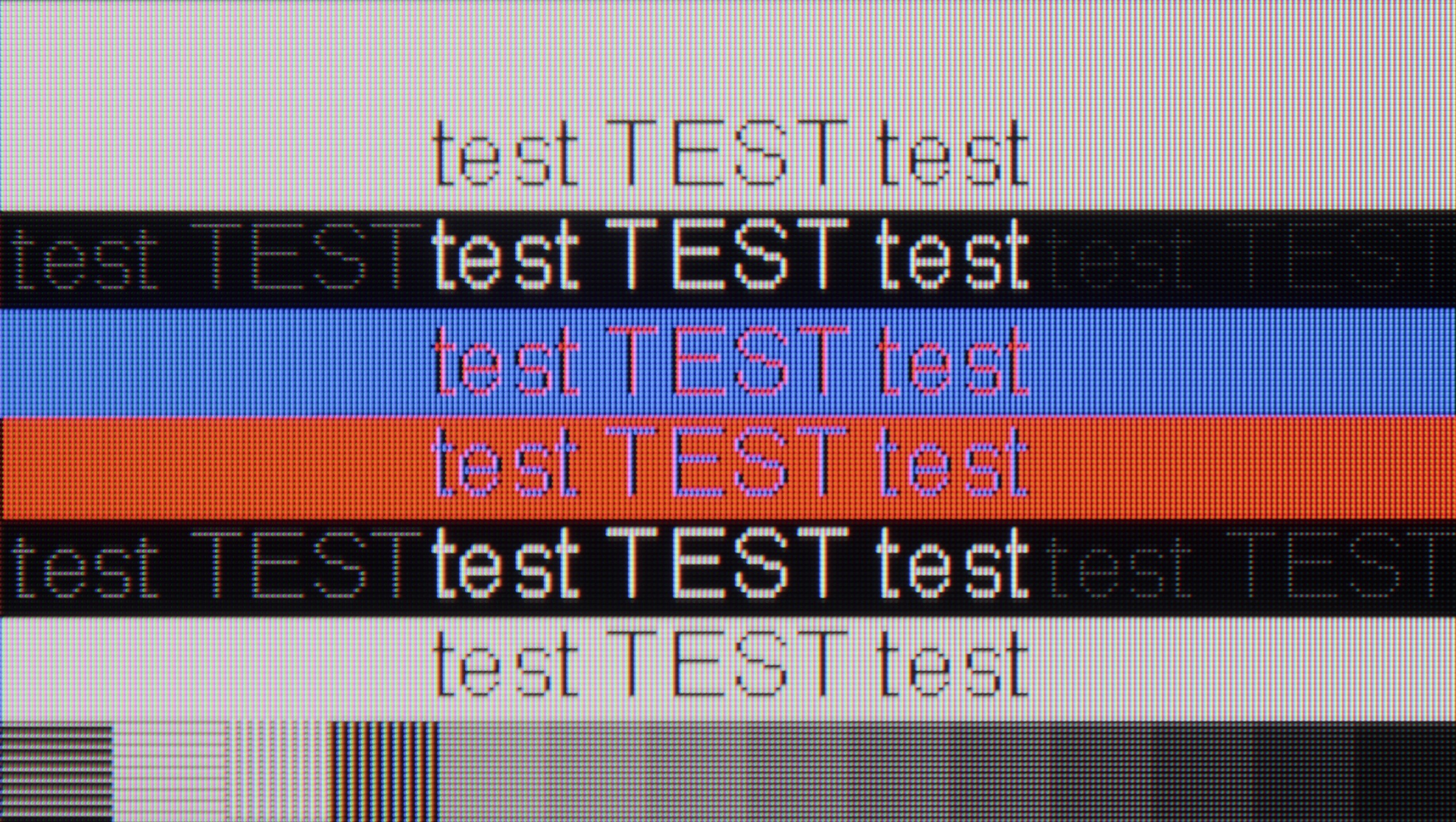
The collaboration of the television Sony X85L with a PC is a bit of a balance between image quality and user comfort. If we want to use the television for work, where clear fonts matter, we need to set the refresh rate to 60 Hz. In this mode, the text looks good and doesn't strain the eyes, which is crucial if we intend to spend a longer time in front of the screen.
On the other hand, if the television is to be used for gaming, where we can take full advantage of its capabilities at 120 Hz, we must bear in mind that the readability of fonts noticeably decreases. The image becomes less sharp, and the text harder to read, which can be frustrating. In short – Sony X85L will perform well for occasional connections to a computer, but if we need it on a daily basis for work and gaming, this compromise may not appeal to everyone.
Playing on the QN80F with a connected computer is pure pleasure. The television effortlessly works with NVIDIA graphics cards (thanks to G-Sync support) and AMD (thanks to FreeSync Premium), and the 144 Hz refresh rate only enhances comfort during dynamic gameplay. Everything works immediately, without unnecessary fiddling with settings – exactly as it should.
When it comes to work, it is also very good. The readability of fonts is at a high level, and texts appear sharp and clear. With very thin horizontal lines, some minor imperfections in shading can be noticed, but honestly – you really have to look closely. Unless, like us, you sometimes enjoy looking at the screen with a magnifying glass… then you might spot something 😉.
Viewing angles
3/10
3.1/10
The viewing angles on the Sony X85L, as is often the case with VA panels, are not the best. The picture looks great when viewed directly, but as soon as you move to the side, you notice that the colours lose intensity and the contrast significantly weakens. This can be an issue if the television is meant for viewing in larger groups, where viewers are seated at different angles. For those who usually watch solo or from one central spot, this won’t be a major downside, but when watching from the side, the picture quality unfortunately declines.
QN80F, like most TVs with a VA panel, does not impress in terms of viewing angles. All it takes is a slight lean to the side to notice a significant drop in brightness and lost colour saturation. The picture loses its "depth" and "vibrancy", and darker scenes may appear slightly washed out. However, this is a typical characteristic of VA panels, which provide significantly better native contrast than IPS panels in return. In short: something for something. If you are sitting directly in front of the screen, there will be no problem. But when watching together in a larger group, it is worth keeping this in mind.
TV efficiency during daytime
6.5/10
6.6/10

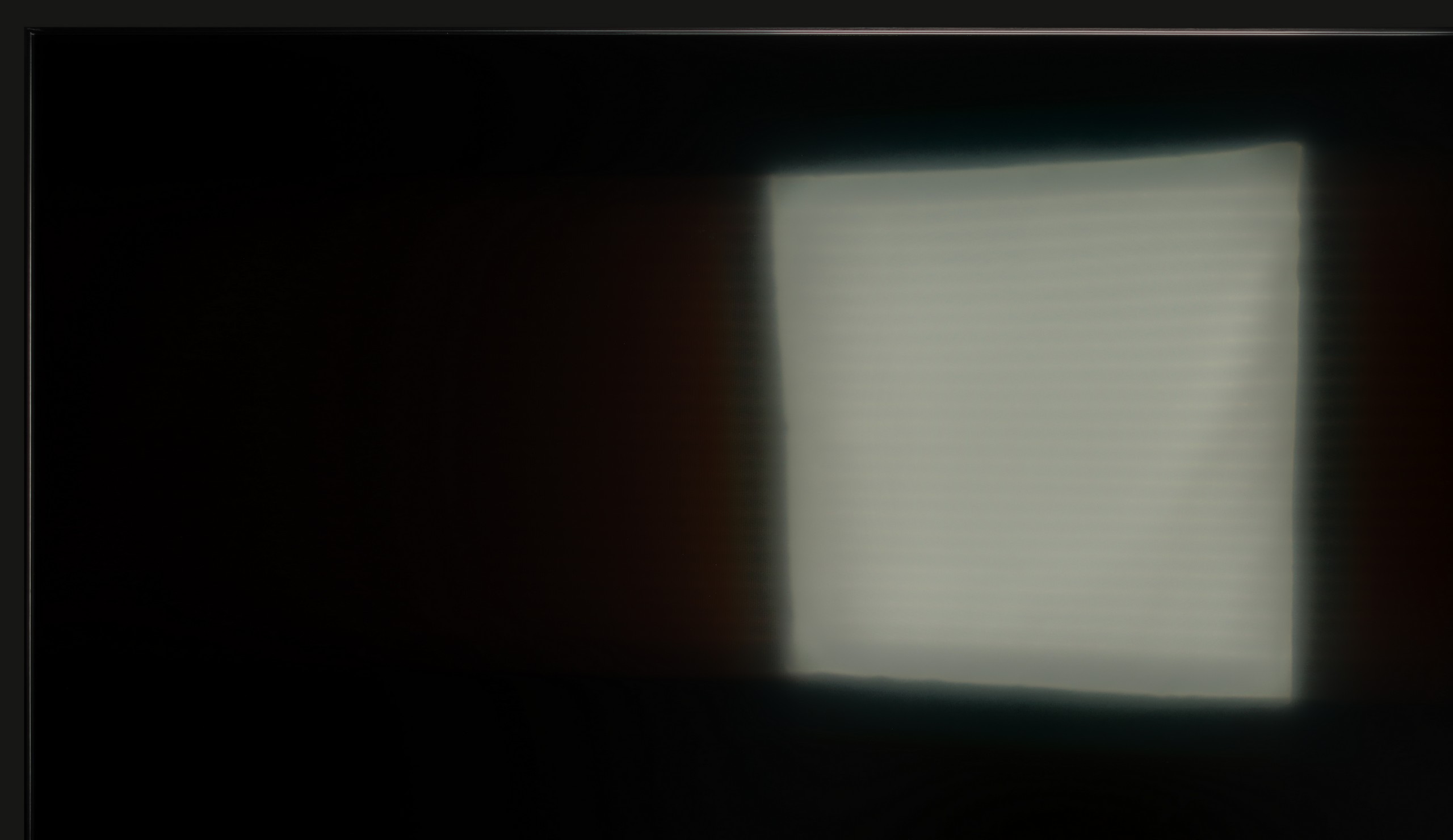

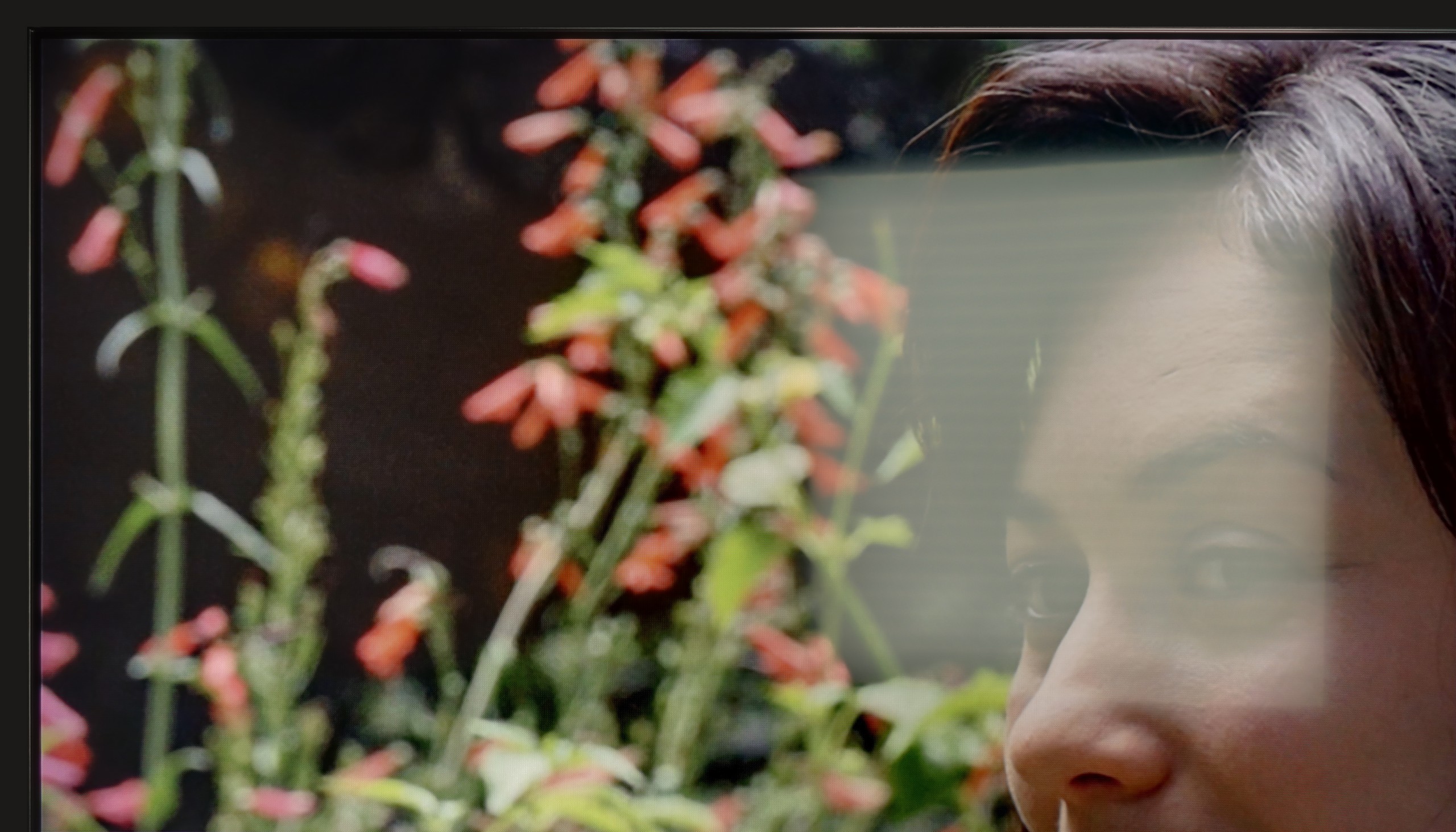
Matrix brightness
Average luminance SDR
Samsung QN80F: 543 cd/m2
Sony X85L: 571 cd/m2
The performance of the television Sony X85L during the day is quite decent. Its satin screen coating handles light reflection moderately well, meaning that in bright rooms there can be some glare, but it is not bothersome enough to significantly interfere. The brightness in SDR mode at 570 nits is sufficient for comfortable TV viewing during the day, even with natural light coming in through the windows. This ensures that colours remain vivid and the picture is clearly visible, making the television suitable for everyday use.
The QN80F is truly a bright television. The average brightness in SDR content is around 550 nits, regardless of the scene, which in practice means that you can comfortably watch content even in a well-lit room – and you don’t have to close the blinds every time you turn on a film. The new satin coating on the panel also deserves praise, as it performs significantly better at reducing reflections compared to last year’s QN80D. Glare is less bothersome, and the screen maintains readability in various lighting conditions. It’s hard to find fault here – the QN80F performs simply excellently during the day.
Details about the matrix
Subpixel Structure:

Panel uniformity:

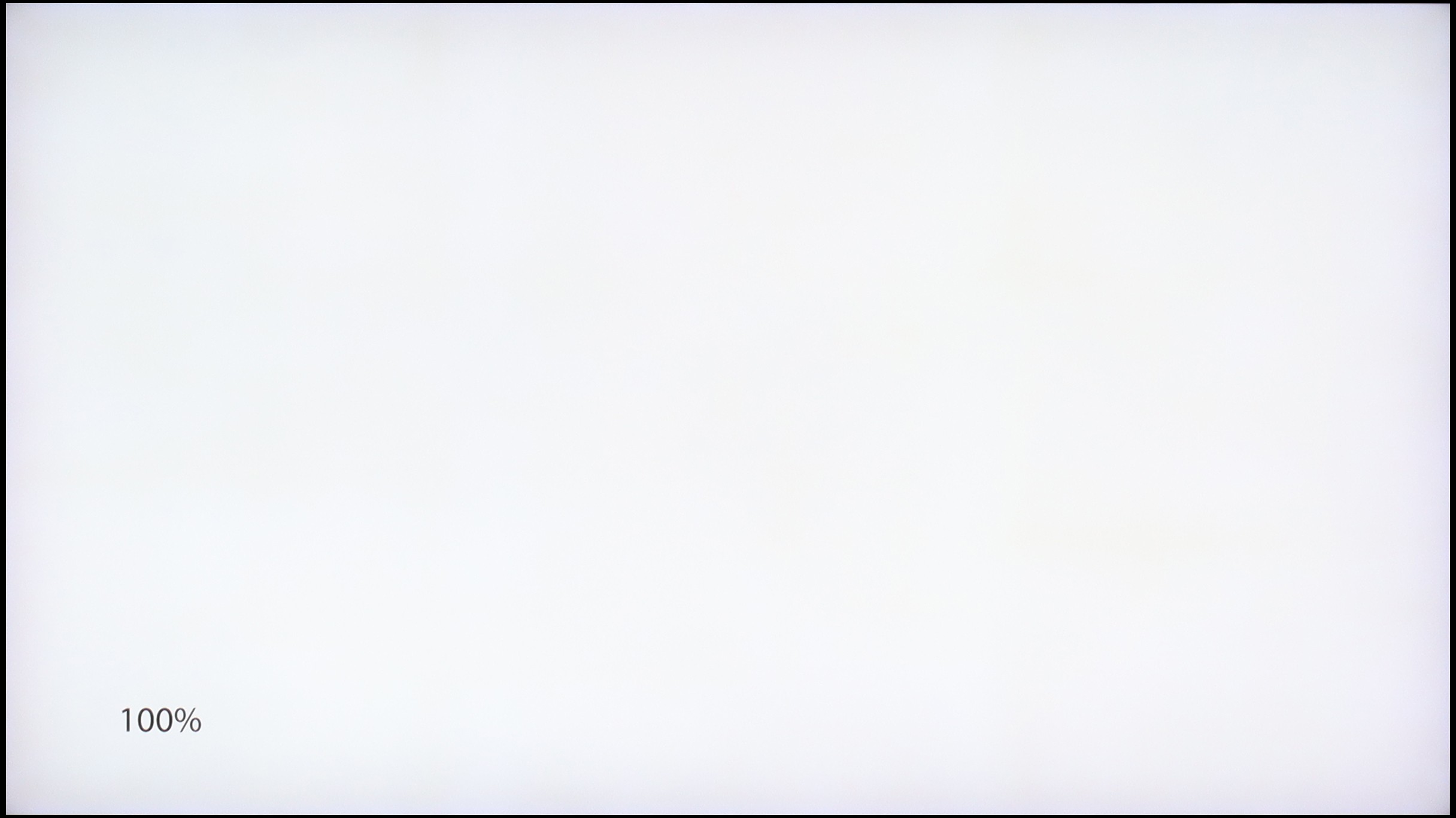
TV features
7.8/10
7.5/10
- HDMI inputs2 x HDMI 2.0, 2 x HDMI 2.1 48Gbps0 x HDMI 2.0, 4 x HDMI 2.1 48Gbps
- Other inputsRCA (Chinch)
- OutputsToslink (Optical audio), eARC (HDMI), ARC (HDMI)Toslink (Optical audio), eARC (HDMI), ARC (HDMI)
- Network InterfacesWi-Fi 2.4GHz, Wi-Fi 5GHz, Ethernet (LAN) 100MbpsWi-Fi 2.4GHz, Wi-Fi 5GHz, Ethernet (LAN) 100Mbps
- TV receptionDVB-T, DVB-T2, DVB-S, DVB-S2, DVB-CDVB-T, DVB-T2, DVB-S, DVB-S2, DVB-C
Classic features:
- Recording to USB (terrestrial TV)
- Recording programming
- Picture in Picture (PiP)
- RF remote control (no need to aim at the screen)
- Backlit remote control
- Teletext
- Audio only mode
- Possibility to connect Bluetooth headphones to the TV
- Possibility to simultaneously use Bluetooth headphones and the TV speaker
Smart features:
- AirPlay
- Screen mirroring (Windows Miracast)
- Wyszukiwanie głosowe
- Voice search in native language
- Ability to connect a keyboard and mouse


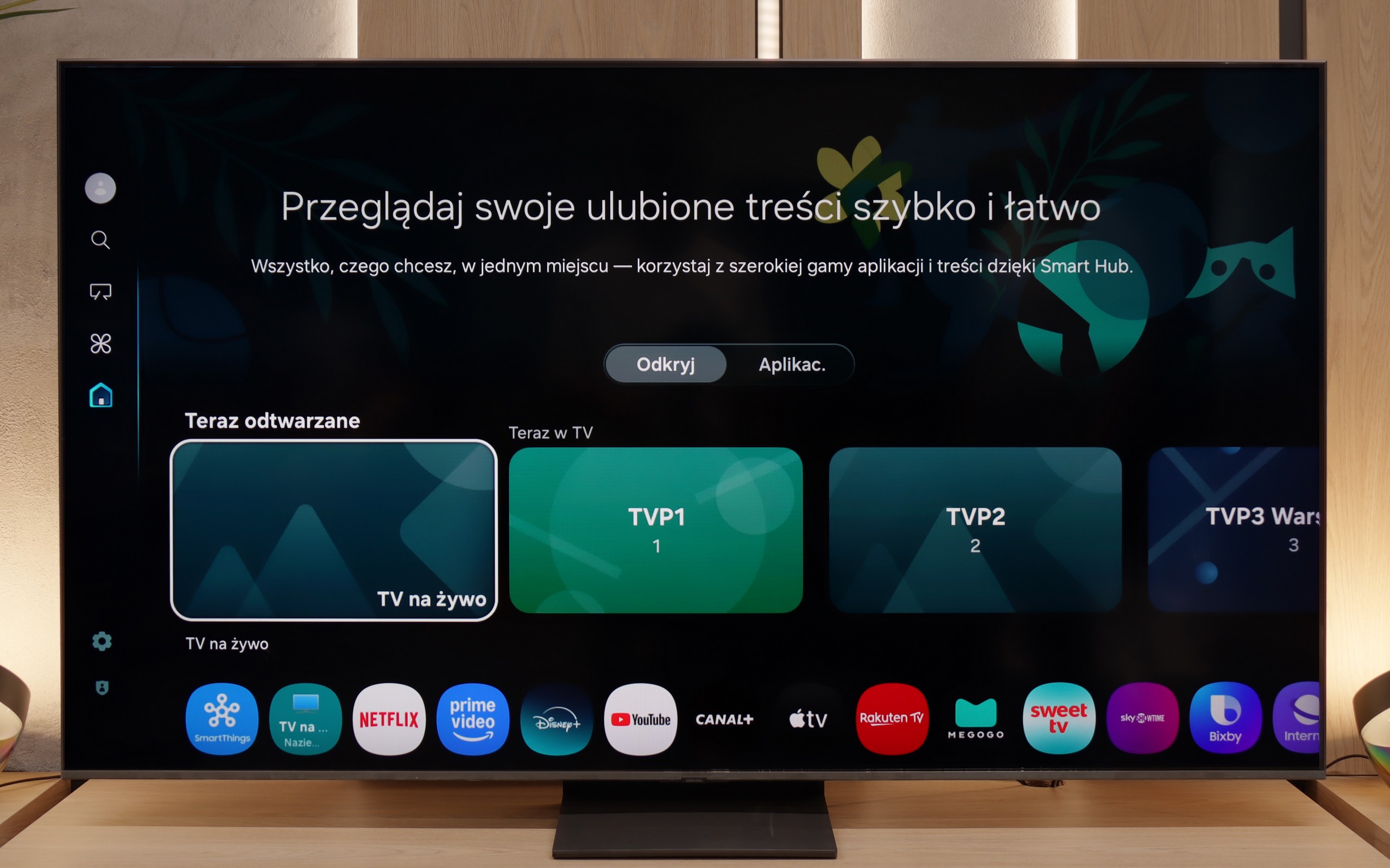
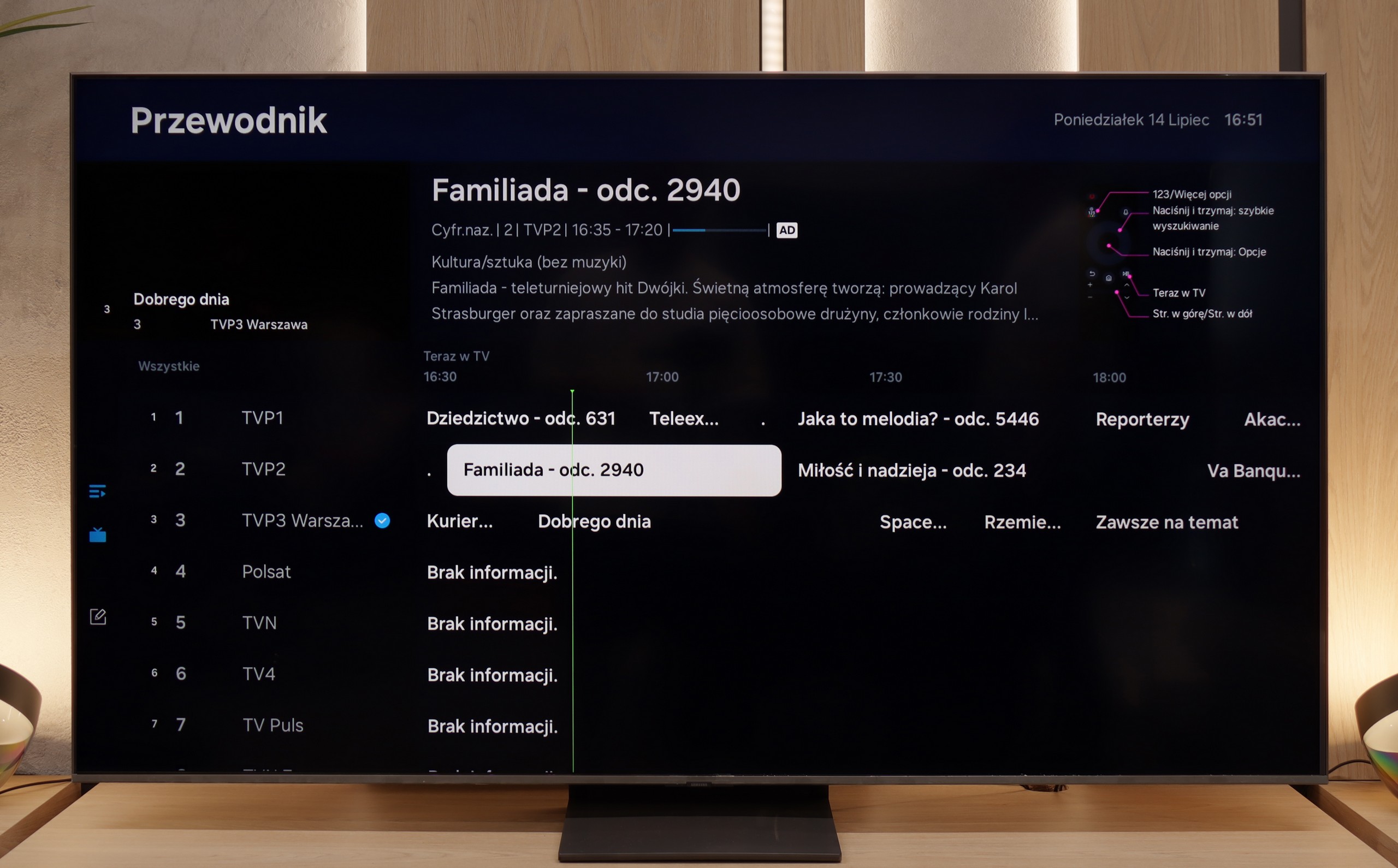
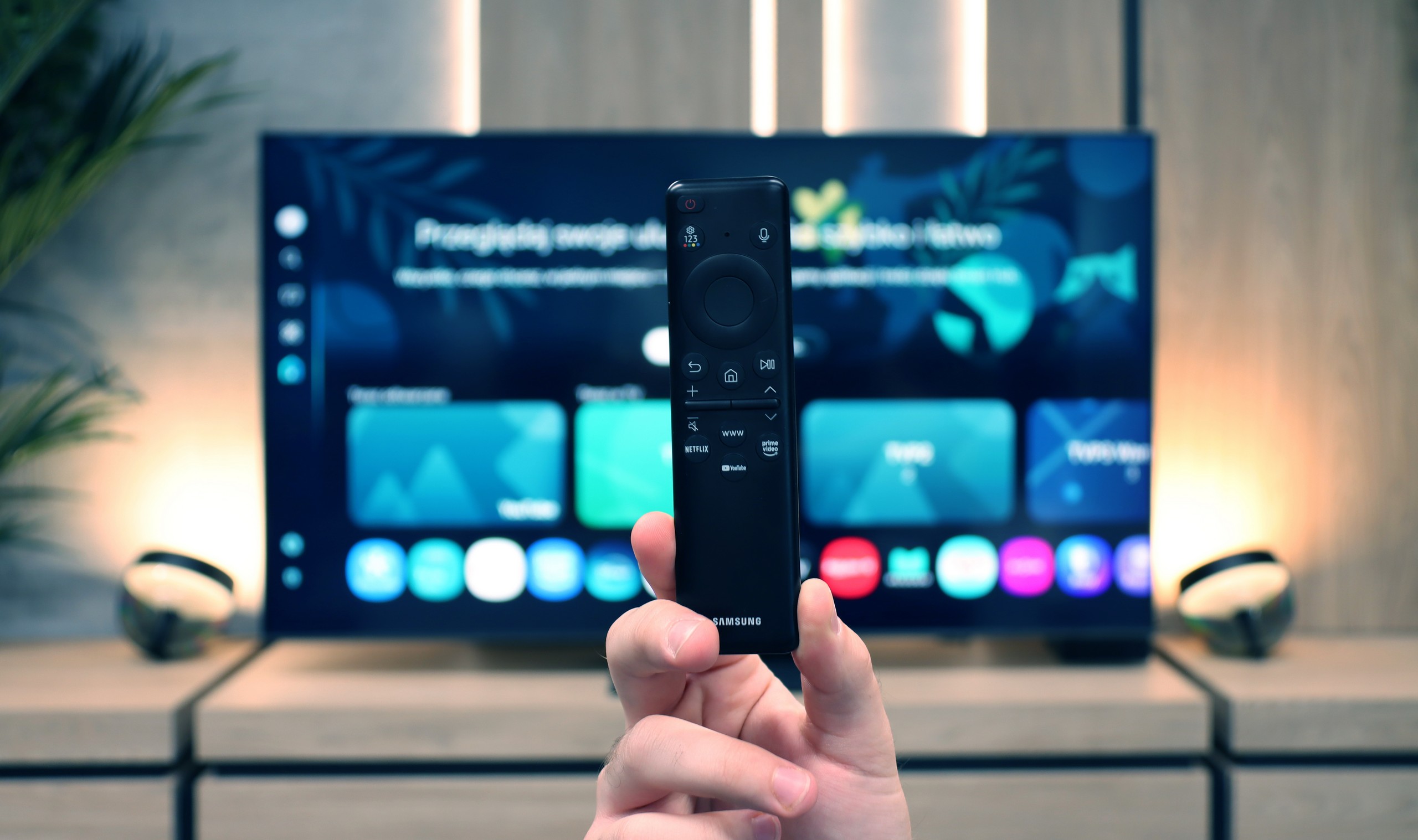
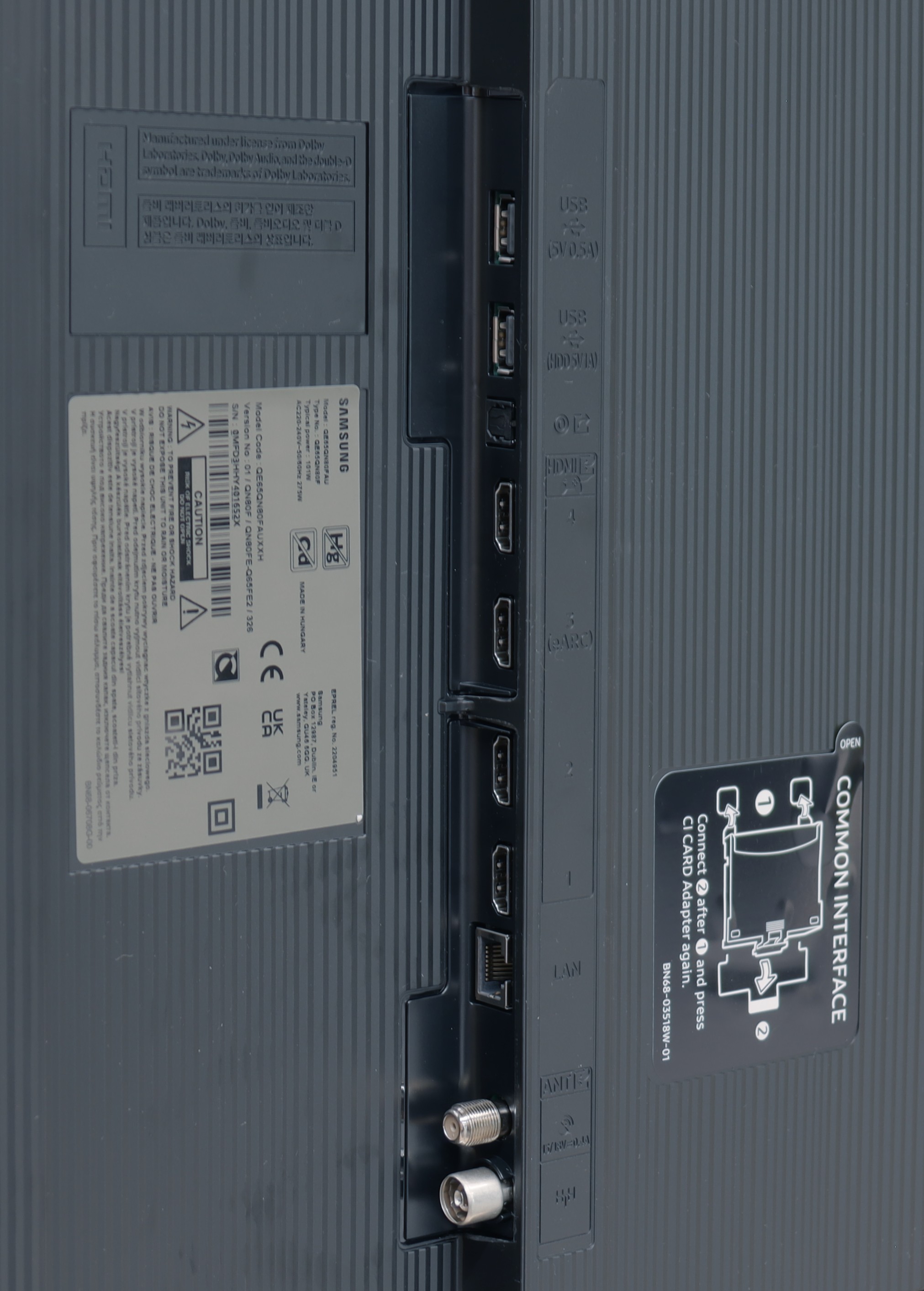
Sony X85L runs on the Google TV system, which is a substantial advantage for many users. The television offers wide access to applications, and using streaming platforms is smooth and user-friendly. The interface is intuitive and easy to master, allowing quick switching between applications and searching for favourite content. Google TV allows for personalisation of the home screen, enabling each user to tailor it to their preferences. The Google Assistant further enriches the experience by offering voice control and quick changes to settings or searching for films without the need for a remote.
In terms of user features, Sony X85L offers many useful options. The television has the capability to record programmes, which is a significant convenience for those wanting to watch their favourite content at any time. AirPlay support allows for seamless content streaming from Apple devices, which iPhone and iPad owners will appreciate. Additionally, thanks to the built-in Bluetooth, various devices such as headphones or keyboards can be connected. However, one of the shortcomings is the PiP (picture-in-picture) function, which may disappoint users who prefer multitasking on screen.
The design of the Sony X85L television, while perhaps not among the thinnest, is solid and elegant. The metal stand with adjustable feet is one of its stronger points, allowing the height and width of the television to be adapted to various furniture and spaces. This practical solution enhances the interior and adds a modern character to it.
SmartTV QN80F: Tizen
In terms of smart features, the QN80F has nothing to be ashamed of. On the contrary – Tizen is one of the richest operating systems when it comes to functionality. We have voice search, support for AirPlay, Miracast, and all the major streaming platforms at our fingertips. But Samsung's true advantage reveals itself in the smart home – SmartThings. Here you can not only synchronise light bulbs and vacuum robots but also integrate devices from other manufacturers, thanks to support for the Matter standard. And suddenly it turns out that the QN80F can serve as a home command centre. There is just one "but" – Tizen is a closed system, so we may not find a few lesser-known applications. Although in practice it has everything that 99% of users need.
Classic TV features:
When it comes to classic features, it is just as good – well, almost. The QN80F supports picture-in-picture, which is a rarely seen but still useful PiP function. We can easily find the EPG, good old teletext (yes, it works!), and the ability to connect external devices via Bluetooth – whether it's headphones or a soundbar. Unfortunately, there is a lack of the option to record to USB from the built-in tuners. This is a minor setback, especially since the competition at a similar price increasingly offers this feature. It may not be a must-have function, but since everything else works so well, it's a pity that this feature is missing a dot over the i.
Playing files from USB
8.7/10
8.4/10
Supported photo formats:
Maximum photo resolution:

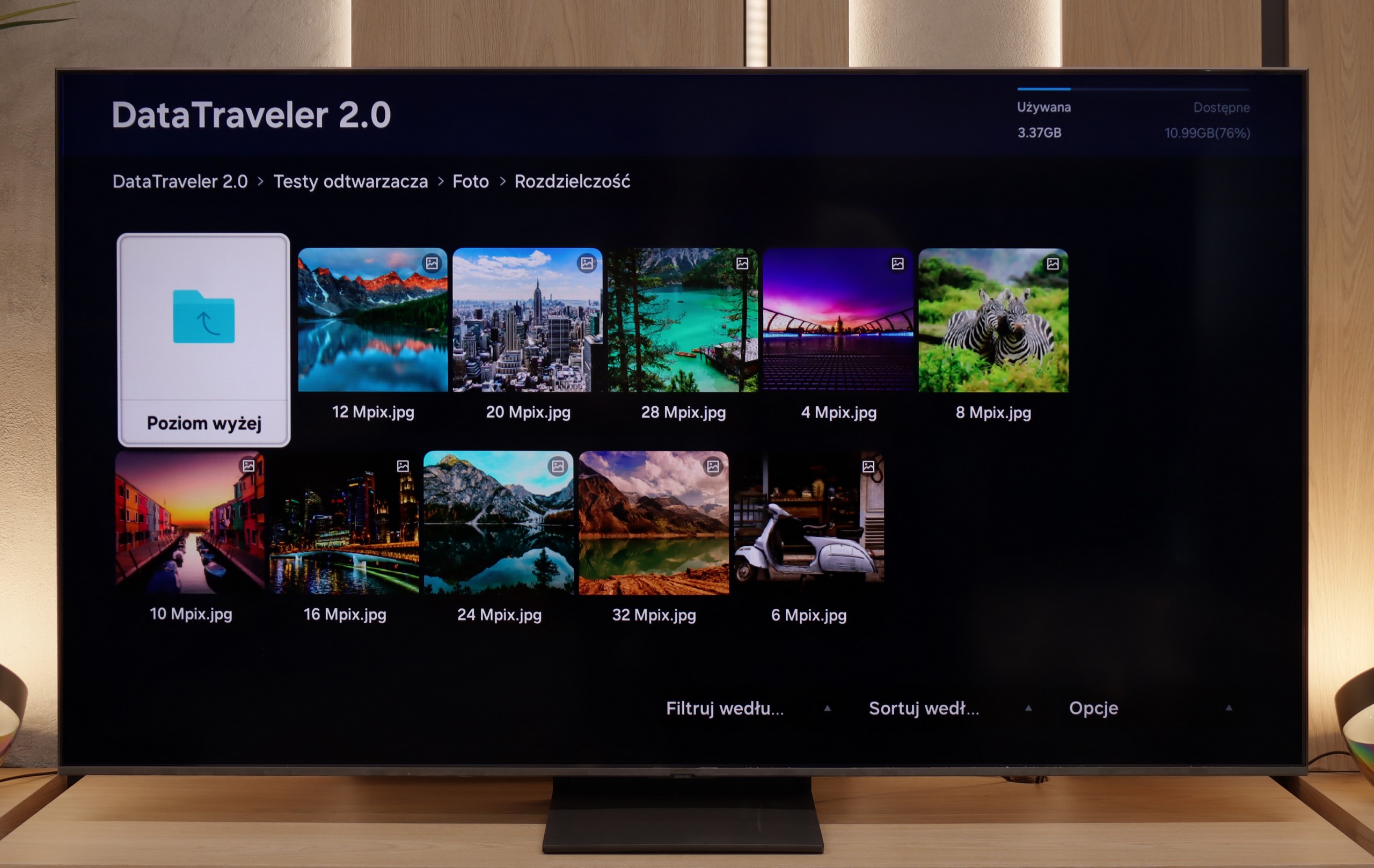
Sony X85L easily handles playback of most popular file formats from USB, which is a big plus for those who often access external content. However, it should be mentioned that there is a small downside – the built-in player does not allow for changing the font colour in subtitles, which may be troublesome for some. Fortunately, thanks to the extensive Google TV system, users have a wide range of options. Alternative media players can be easily installed, offering more personalisation options.
The built-in media player in the QN80F handles most popular video formats – from classic MP4 to slightly more demanding containers. It may not be a powerhouse like VLC, but it's perfectly adequate for home use. The situation is less impressive with photographs – here, unfortunately, it's rather modest. Support is mainly limited to the JPG format, but hey, at least that's the most important one 👌. During our tests, there was also a slight issue with subtitles. The QN80F could only handle the simple text format .txt – other, more advanced formats (like .srt or .sub) were unfortunately not recognised.
Apps
9.6/10
8.7/10














































Sound
6.9/10
6.7/10
- Subjective sound quality:6.9/106.7/10
- Dolby Digital Plus 7.1:
- Dolby True HD 7.1:
- Dolby Atmos in Dolby Digital Plus (JOC):
- Dolby Atmos in Dolby True HD:
- DTS:X in DTS-HD MA:
- DTS-HD Master Audio:
The sound in Sony X85L is good – it is clear across the entire range, allowing enjoyment of both dialogues and music. The bass, though light, is noticeable and adds some depth to the overall sound. However, it should be emphasised that this is a subjective assessment – some may find such a sound profile satisfying, while others might need additional audio equipment to fully experience stronger tones and a more spacious sound.
For a television of this class, the QN80F sounds surprisingly good. It supports the Dolby Atmos format, which is worth noting, as this is still not a given in many models in this range. Unlike the thinner QN70F, here you can even feel a slight bass – all thanks to the thicker casing, which simply provides more space for the sound to "breathe." It's perfectly adequate for everyday viewing and series, and with the right settings, one can even be tempted to listen to music without the need for external equipment. However – as is often the case with Samsung, there is unfortunately a lack of support for the DTS:X format, so if we are using audio devices that support this format, we will first need to connect them to the amplifier and only then to the television.


